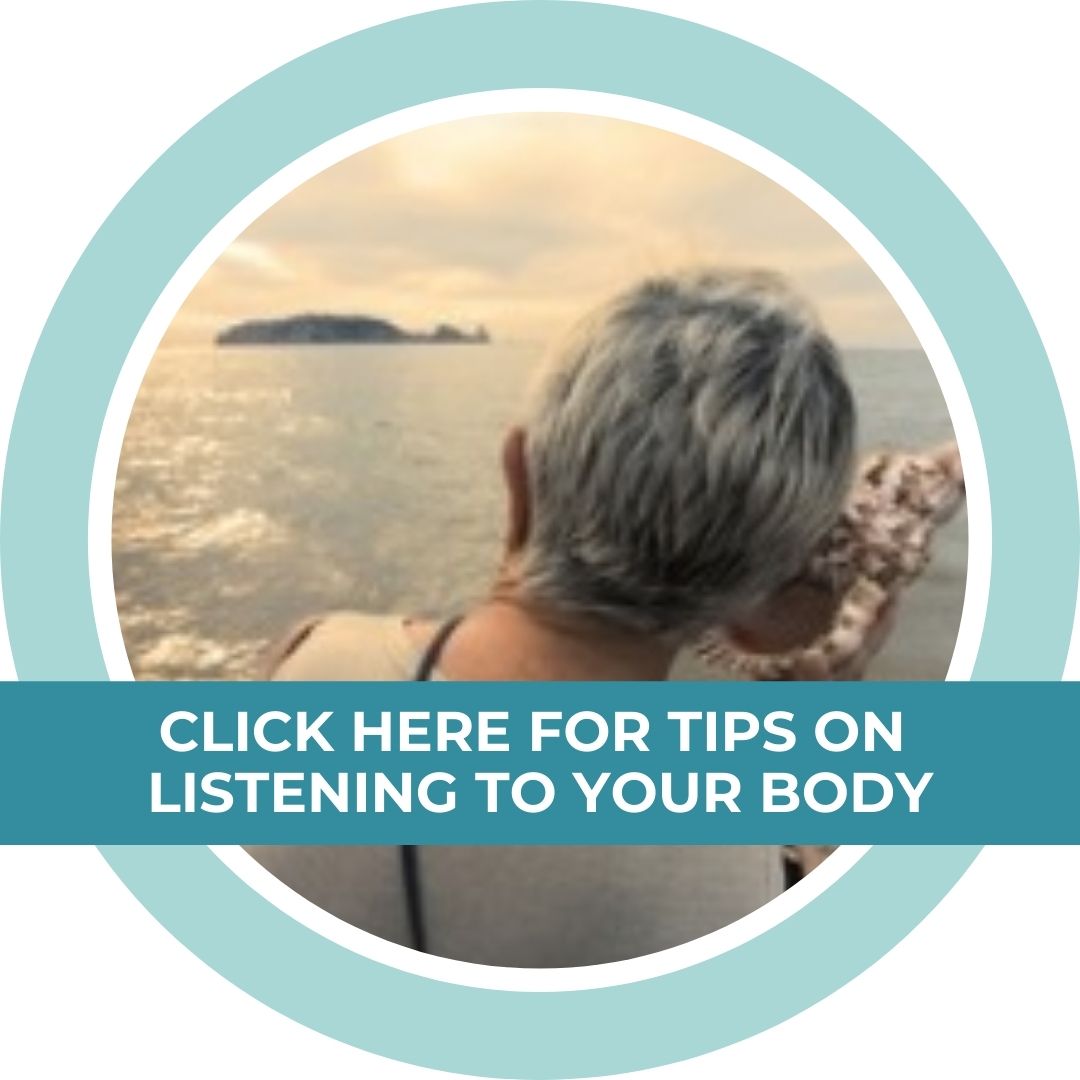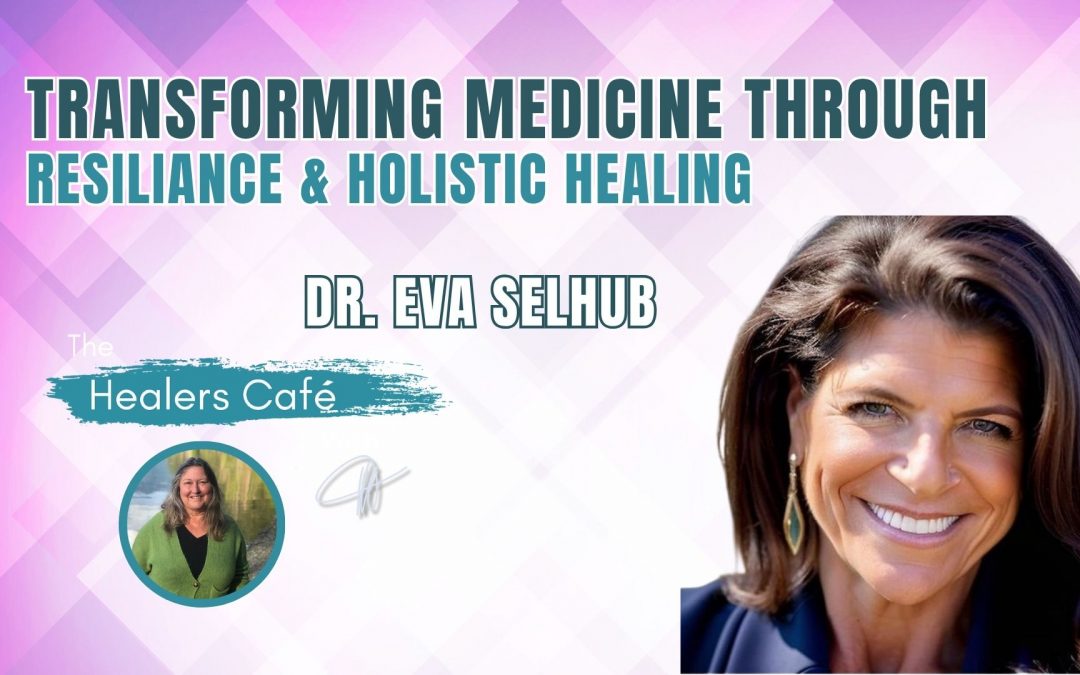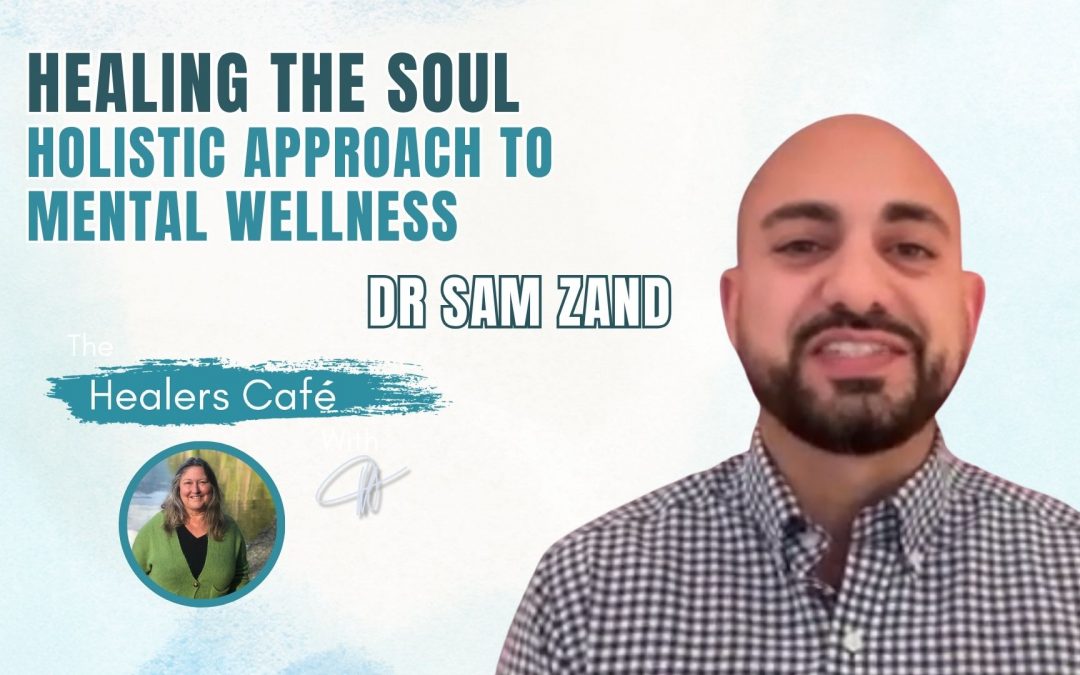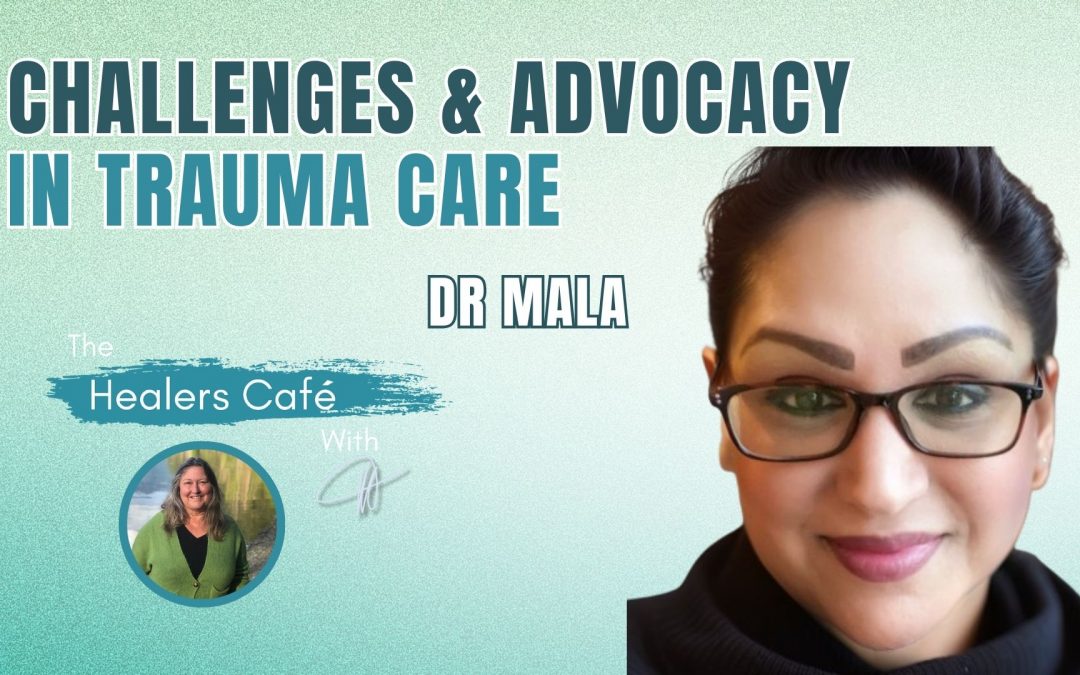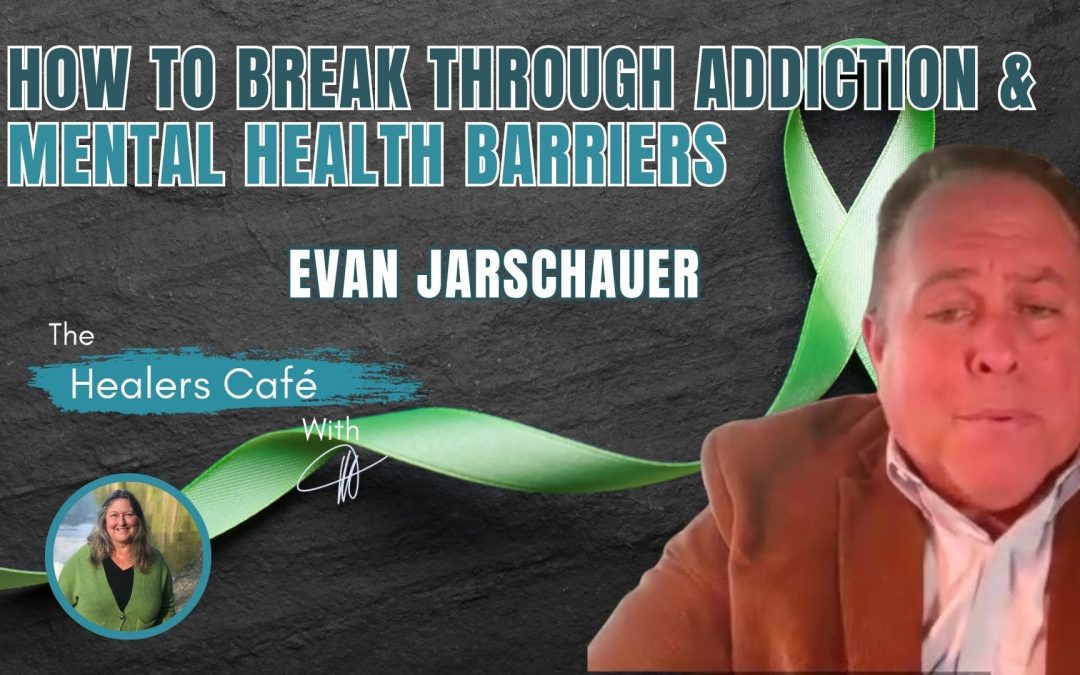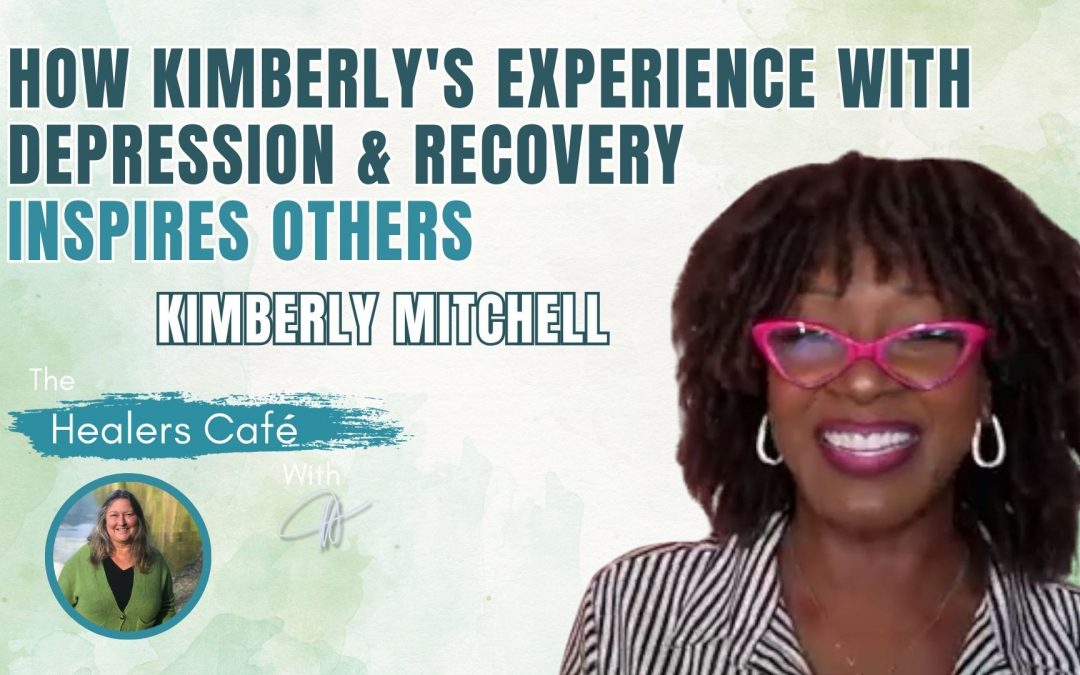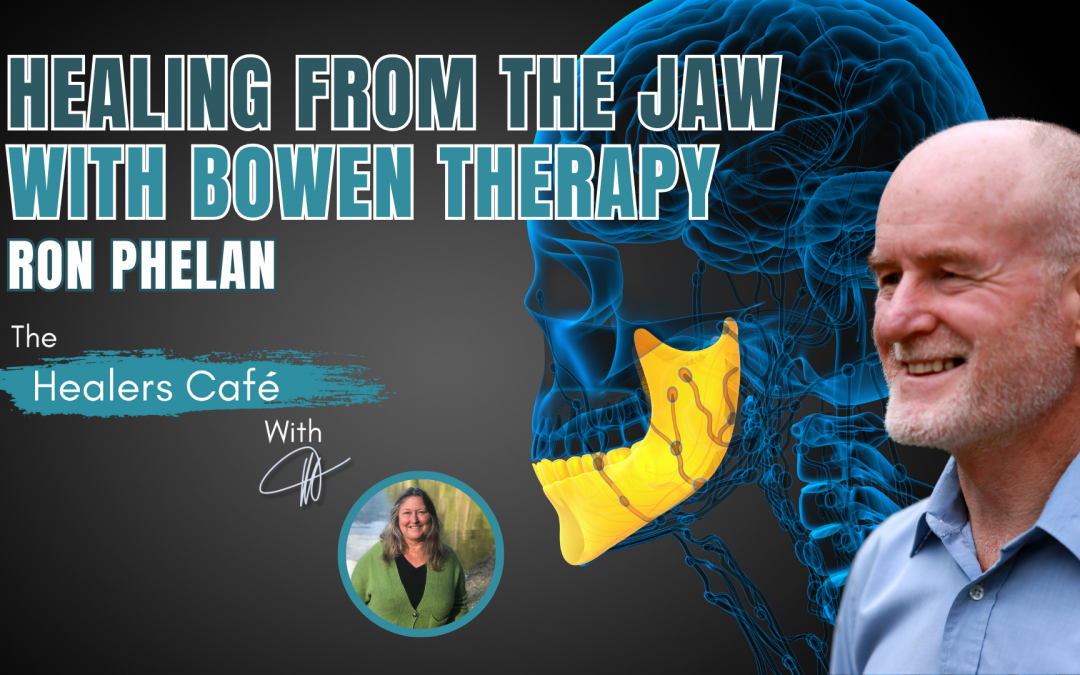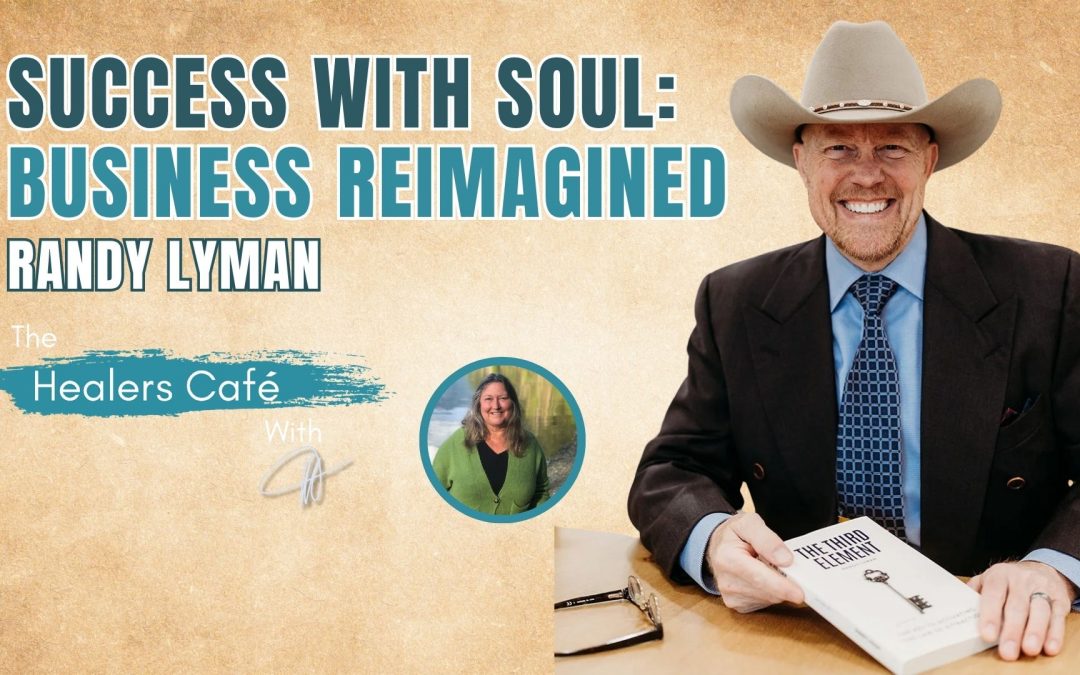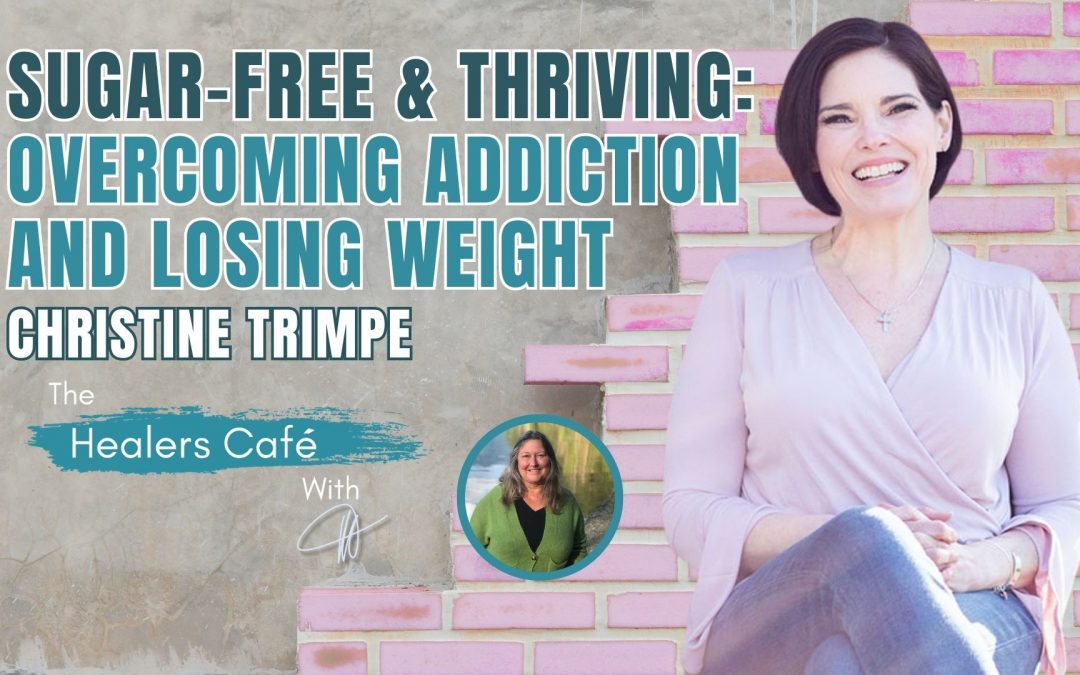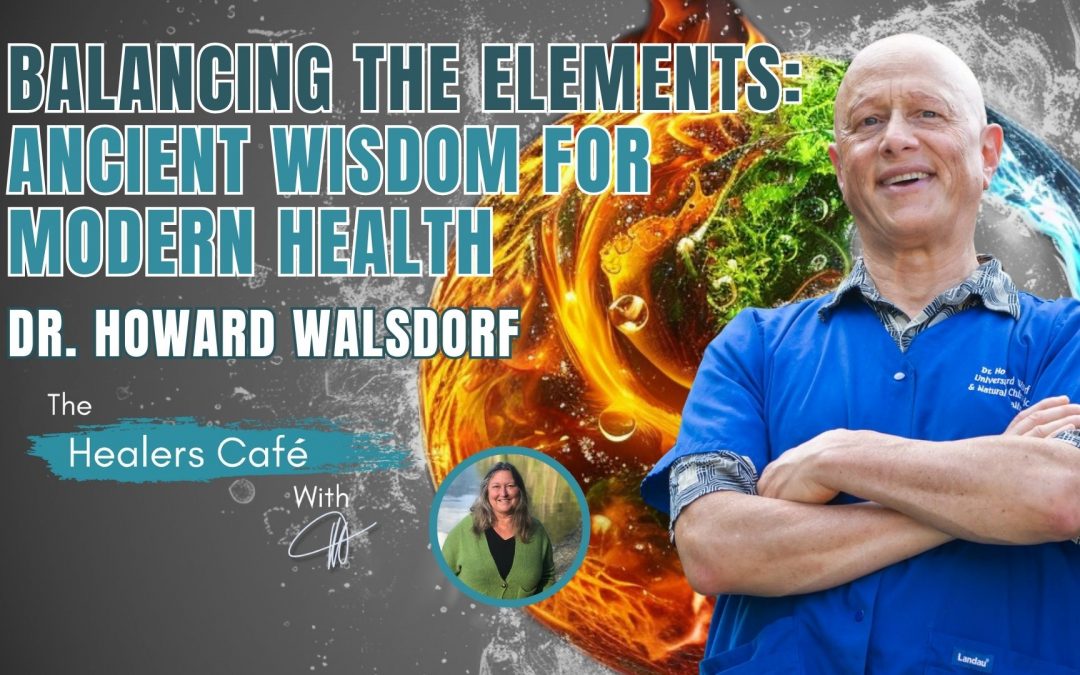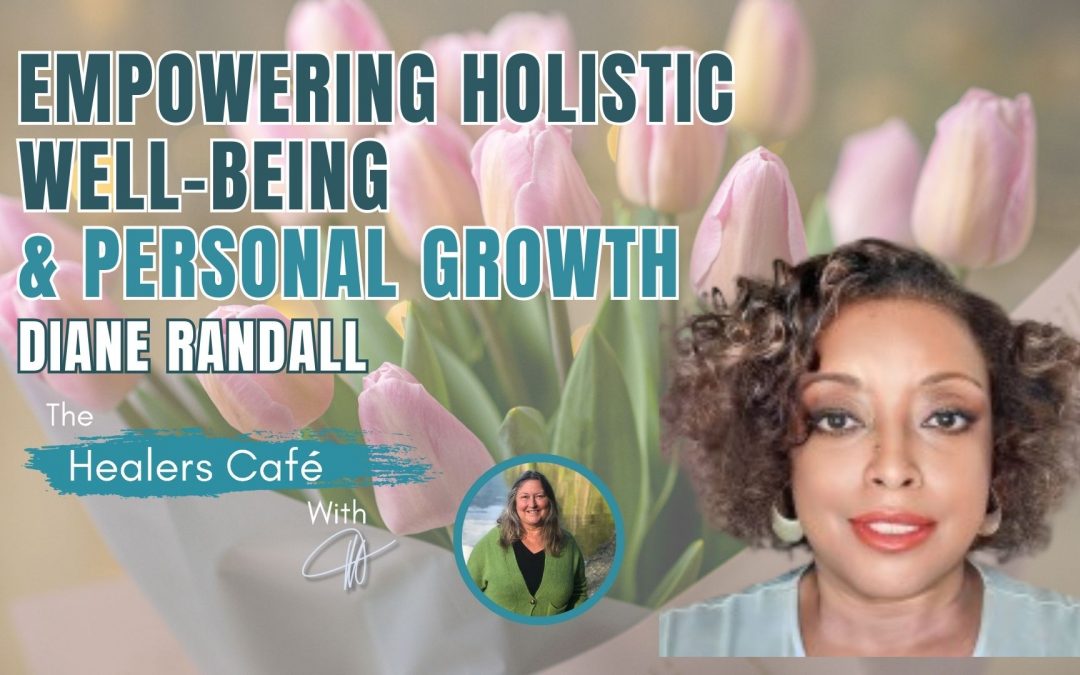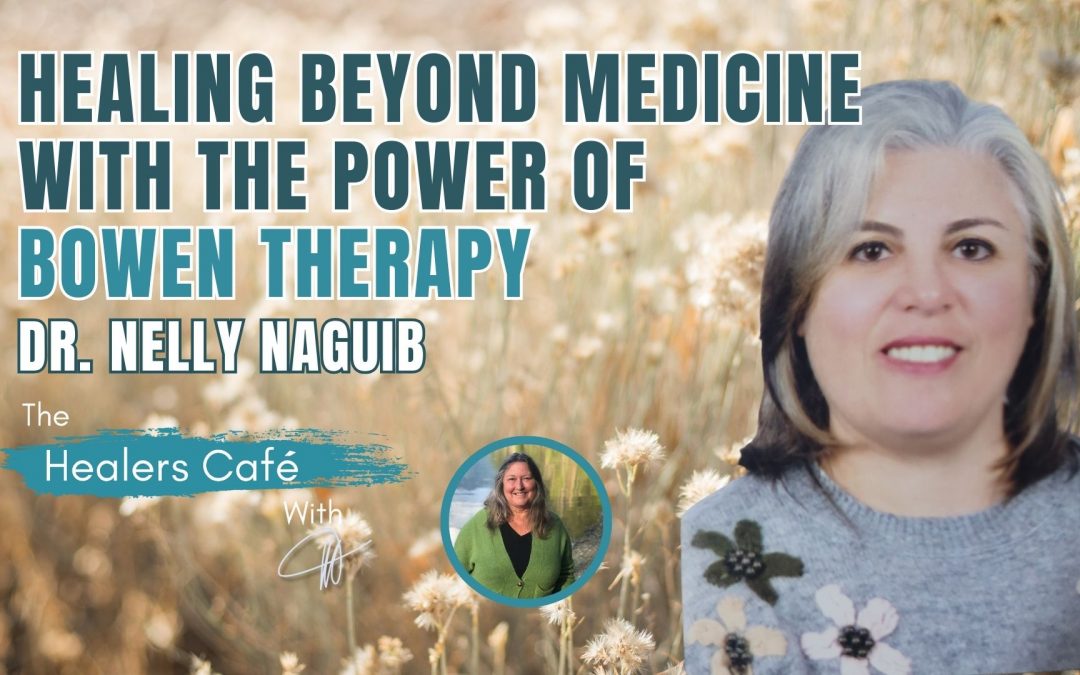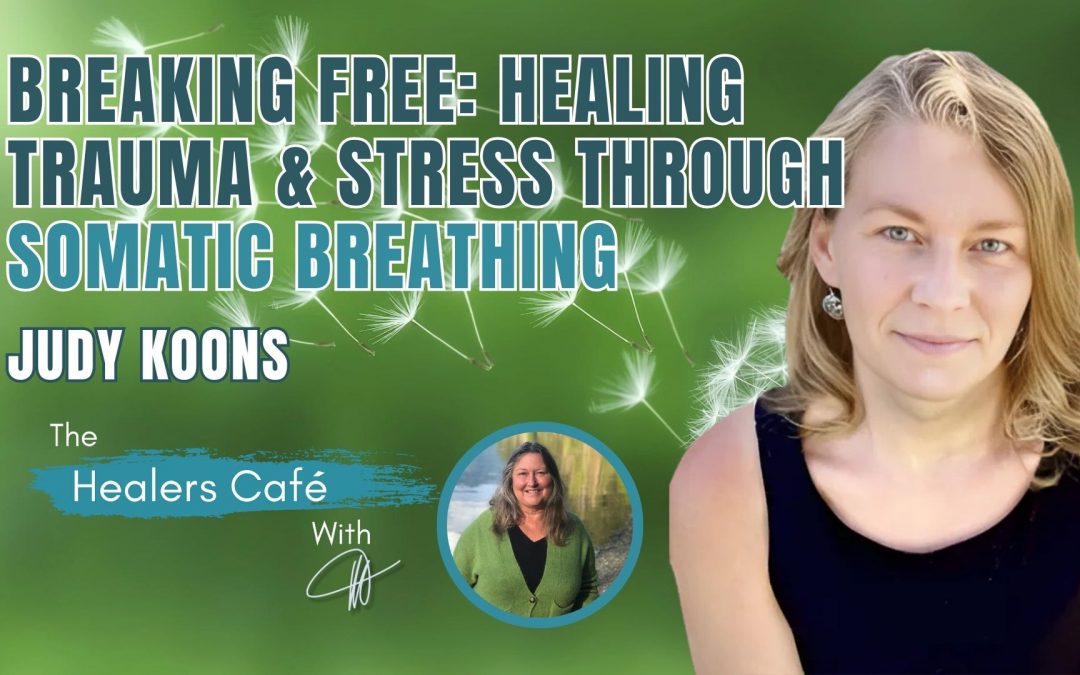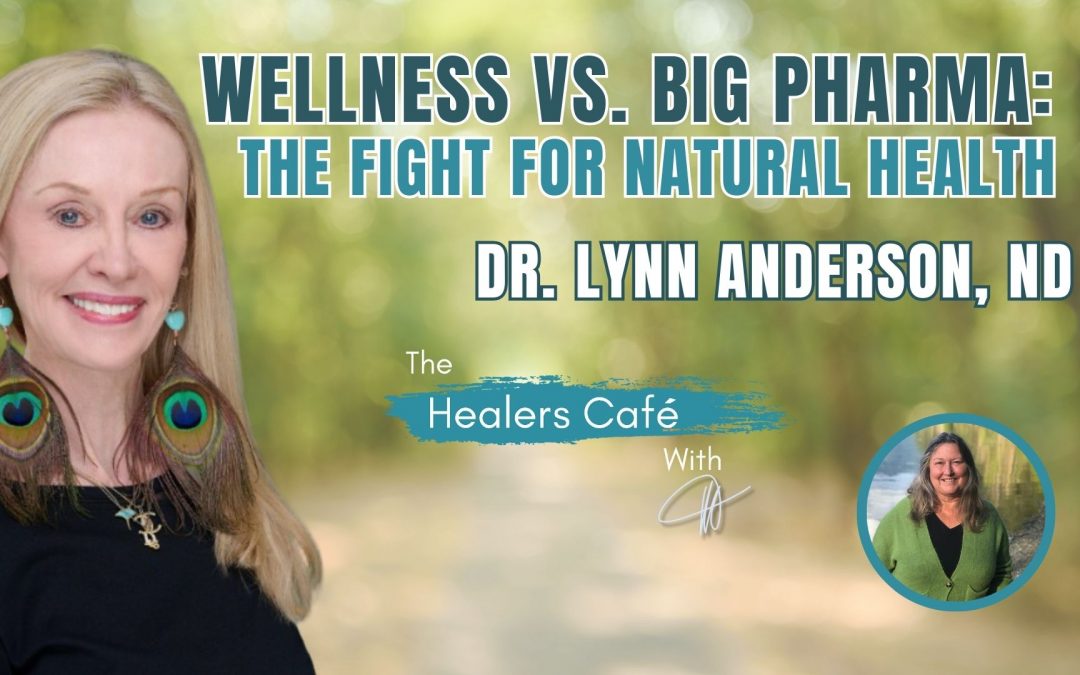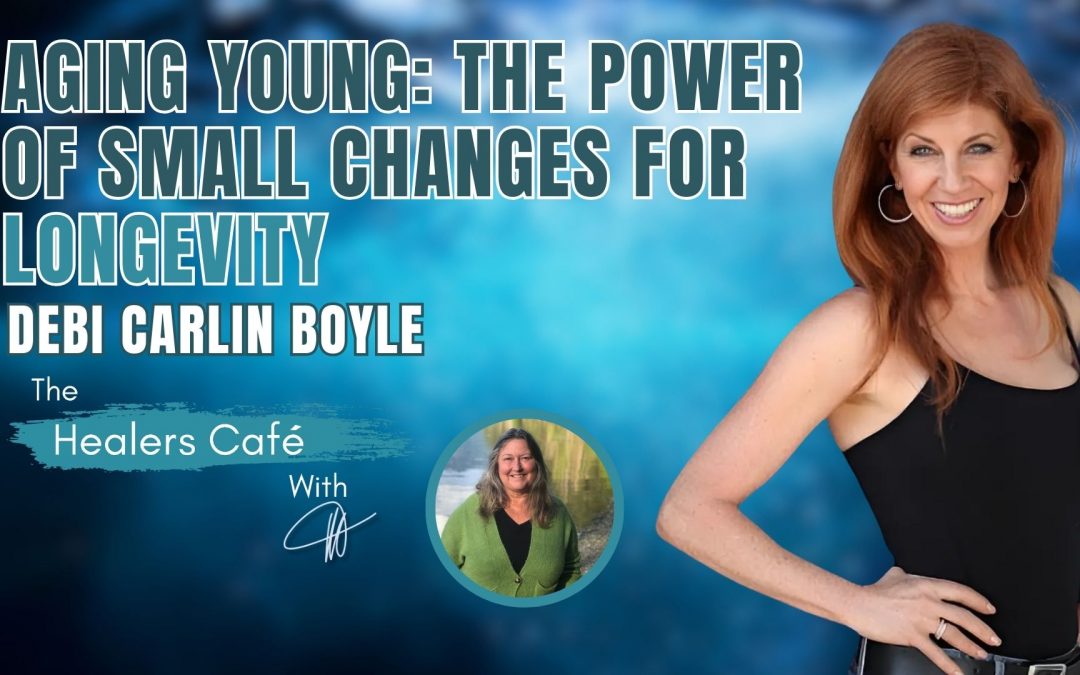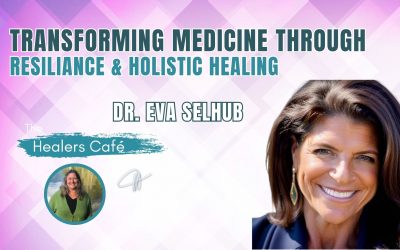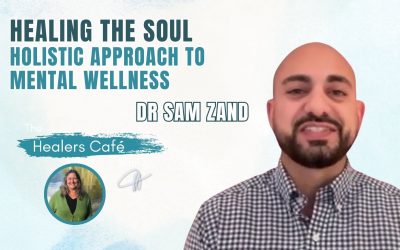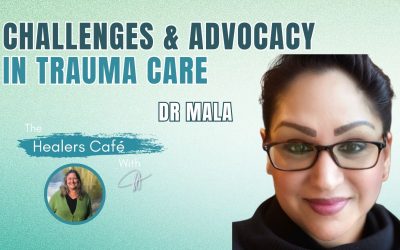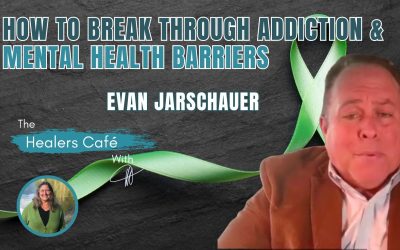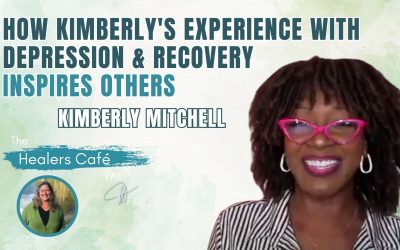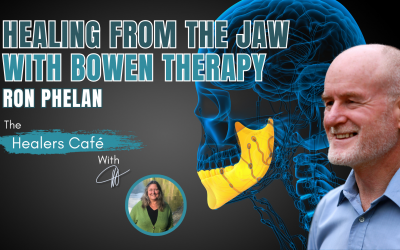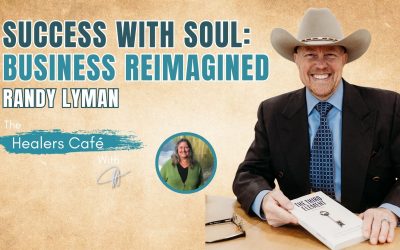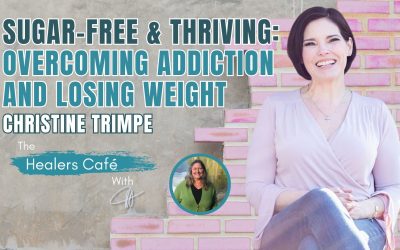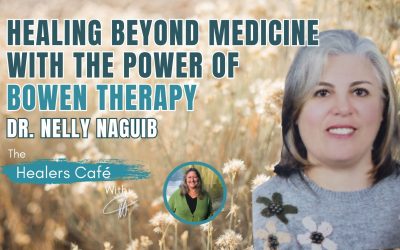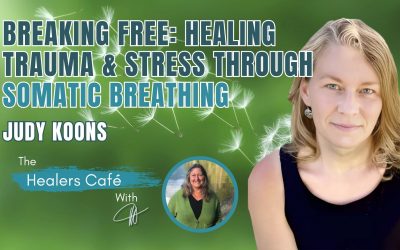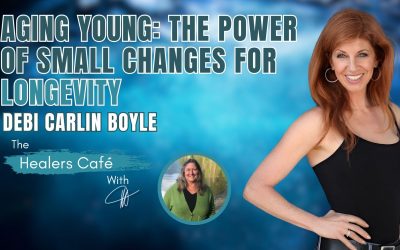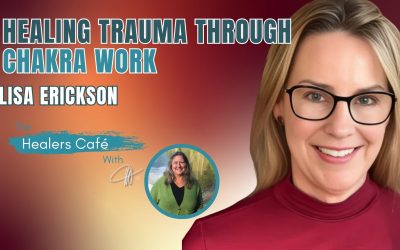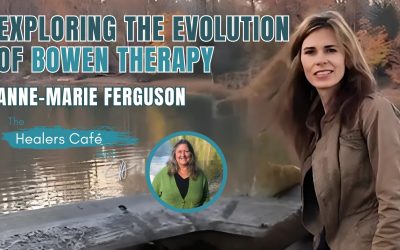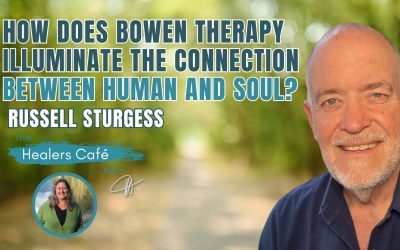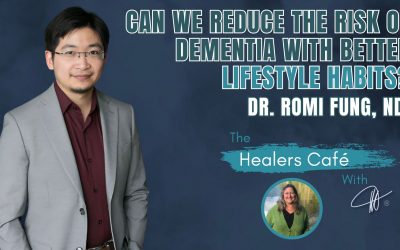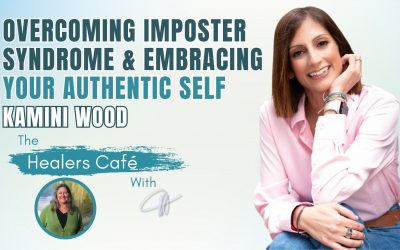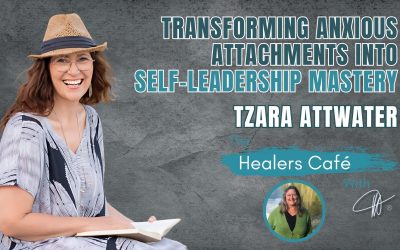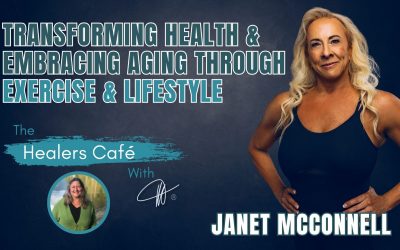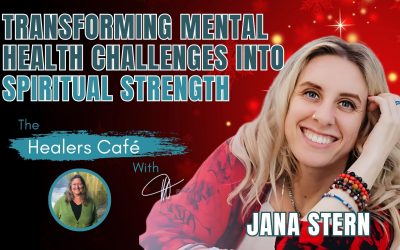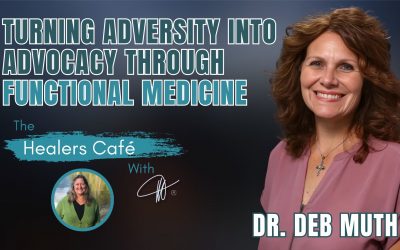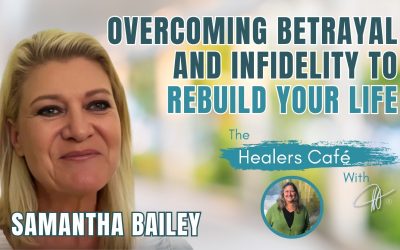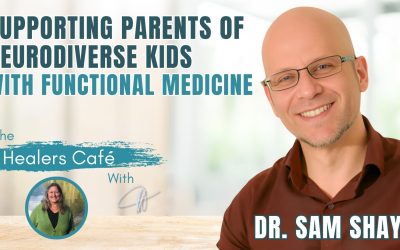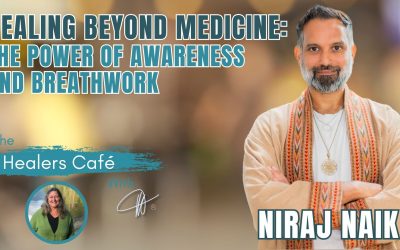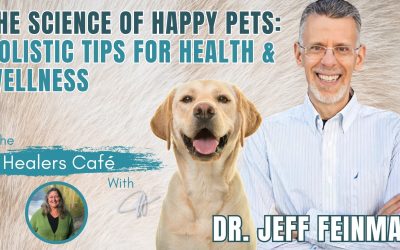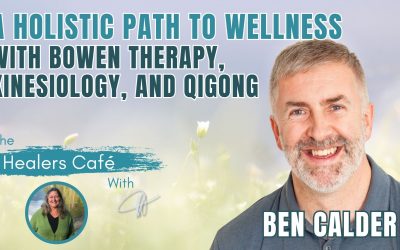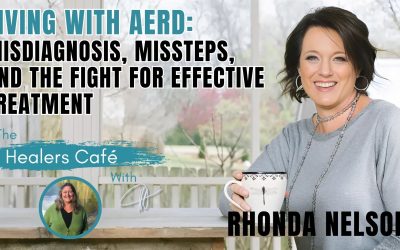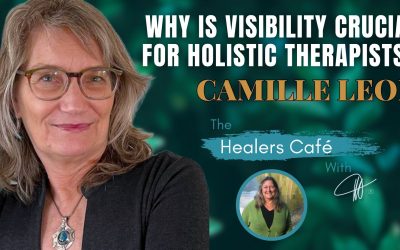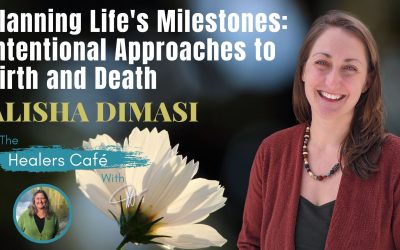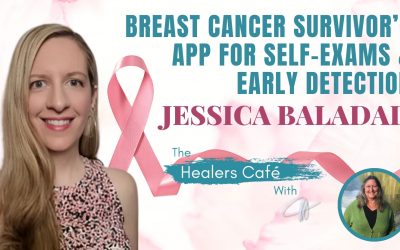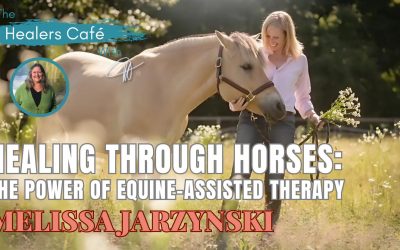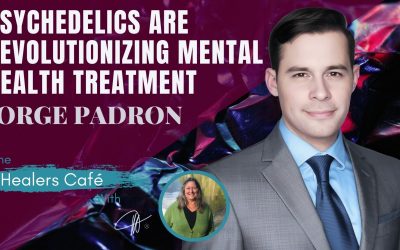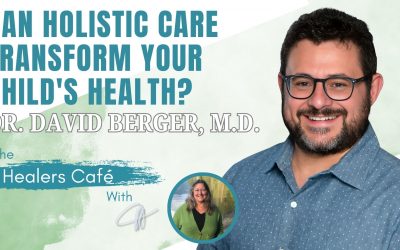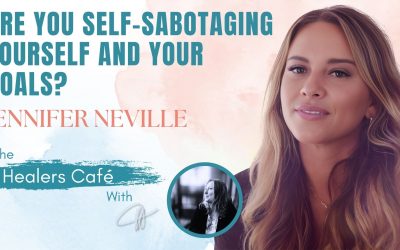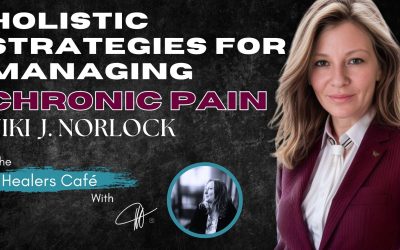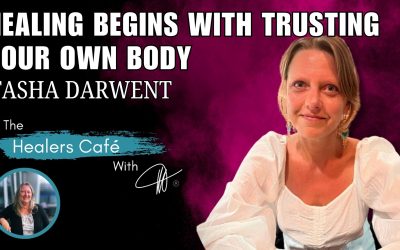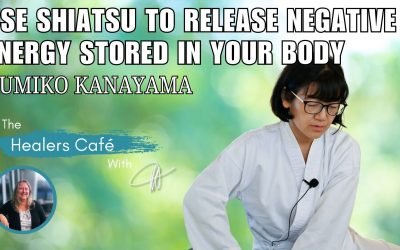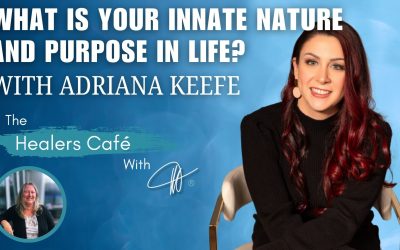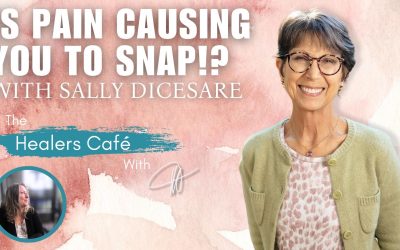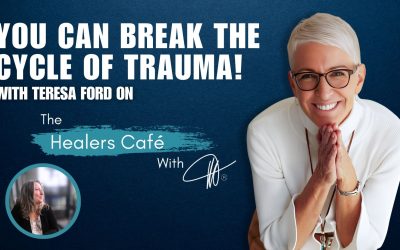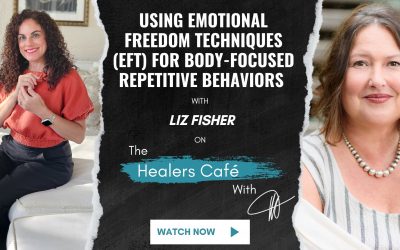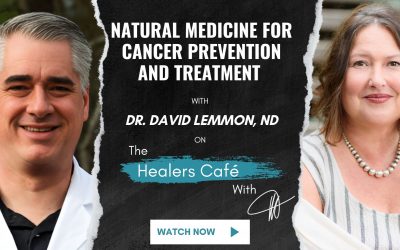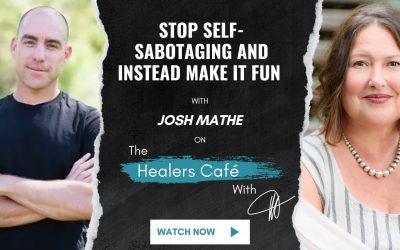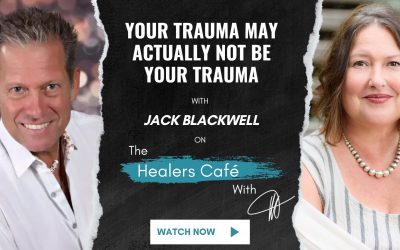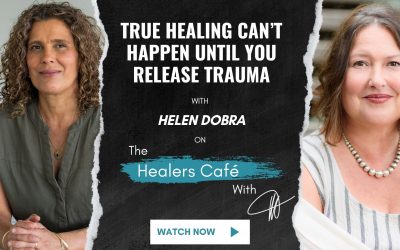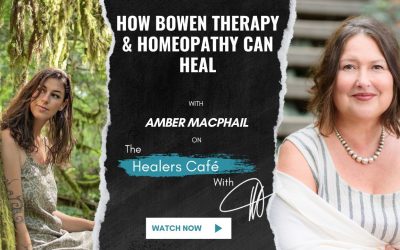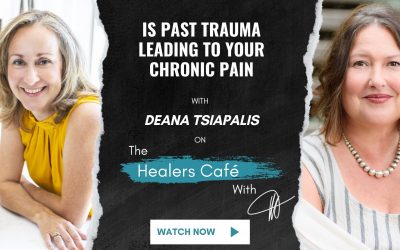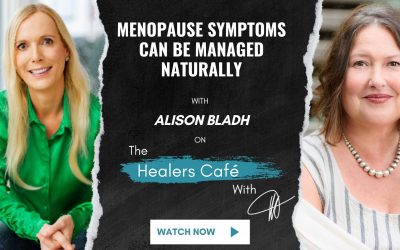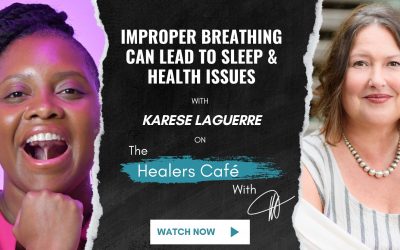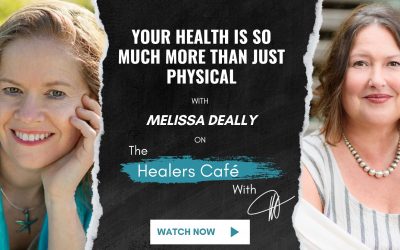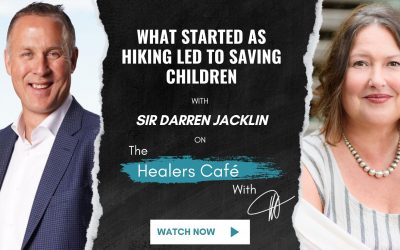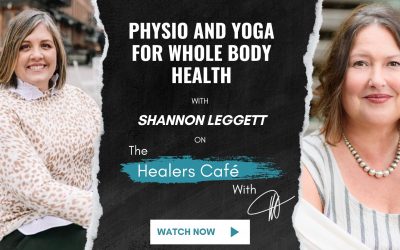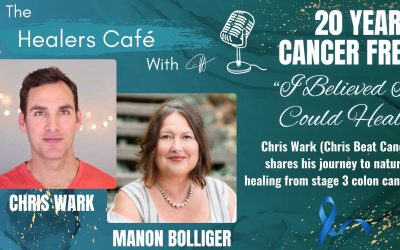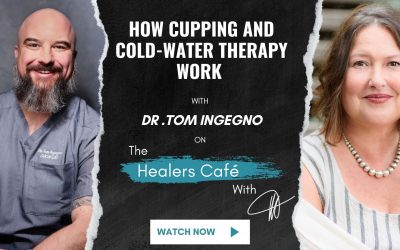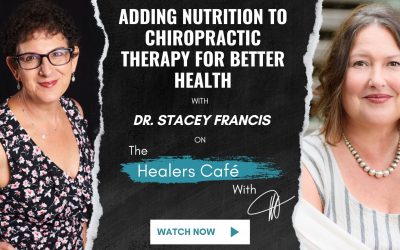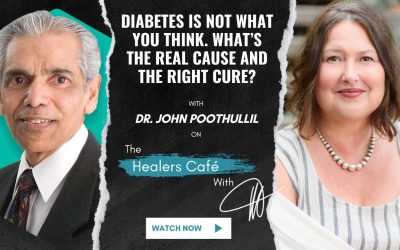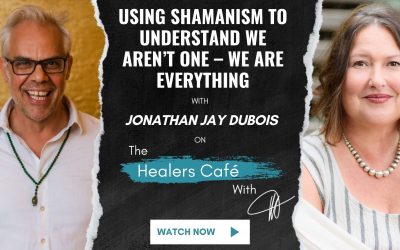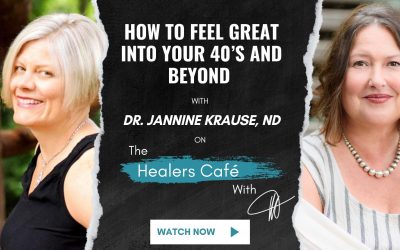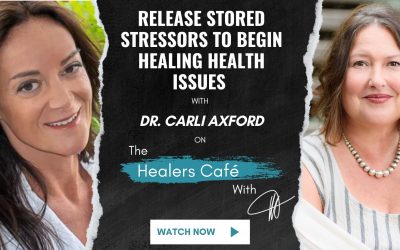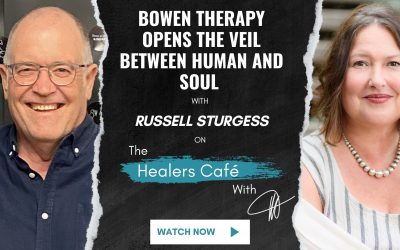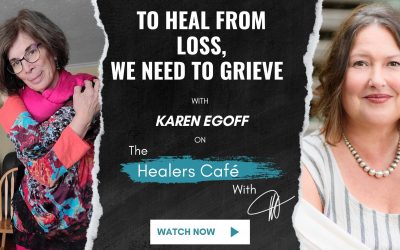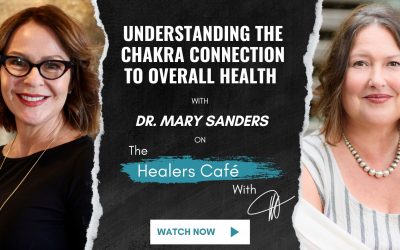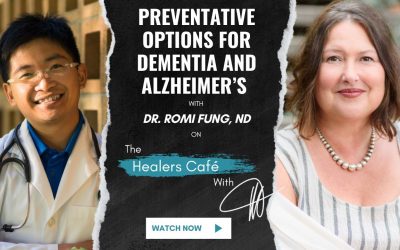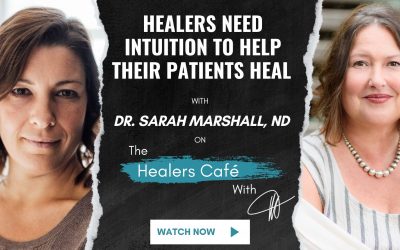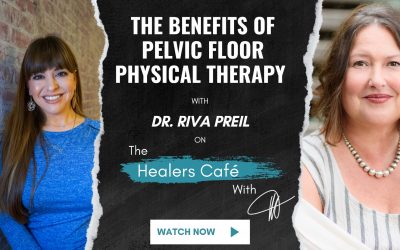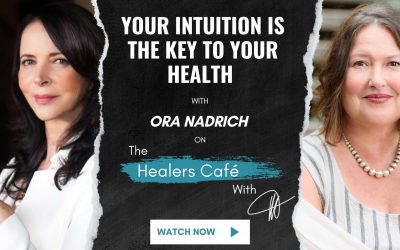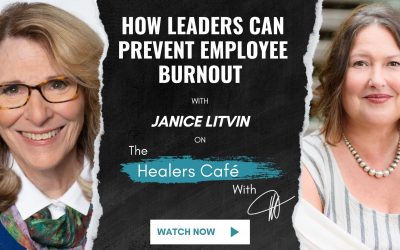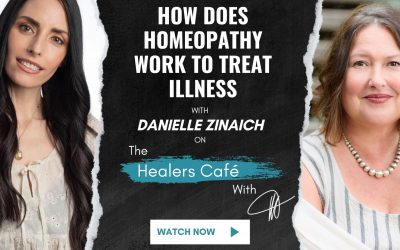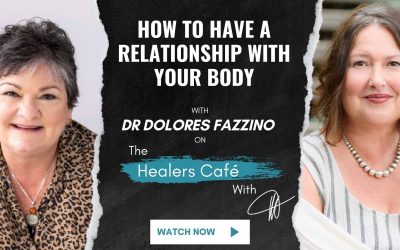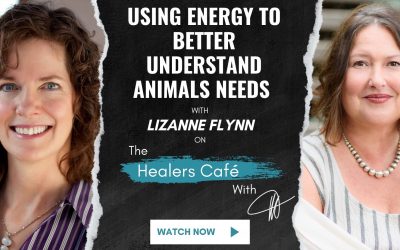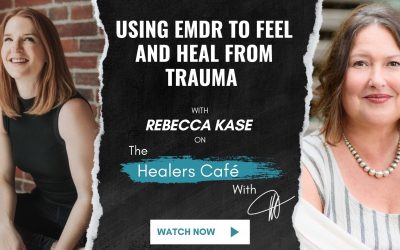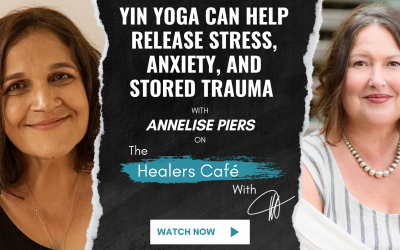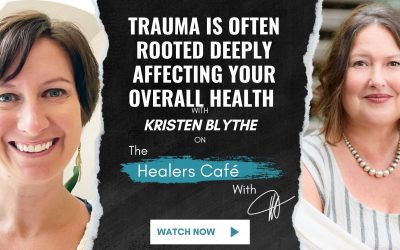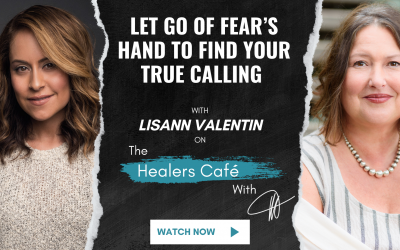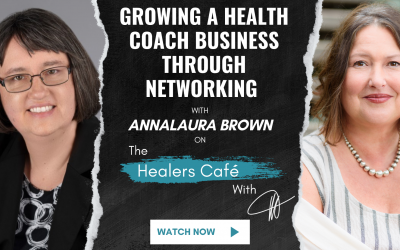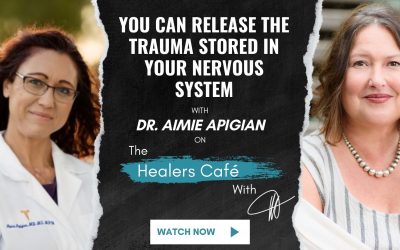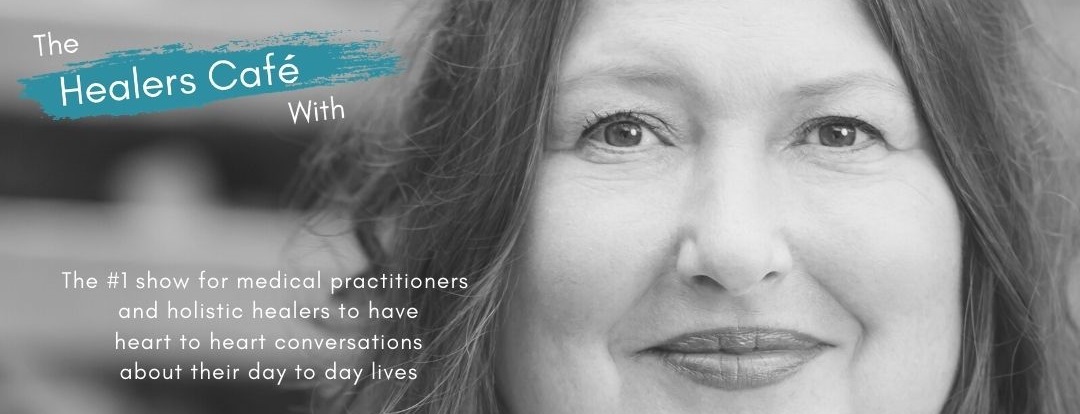
If you haven’t done so, would you please RATE and REVIEW The Healers Café podcast? It definitely is appreciated
Follow / Listen to The Healers Cafe on:
iTunes | Google Play | Spotify, | Libsyn | iHeartRadio | Gaana | The Healers Cafe | Radio.com | and many more
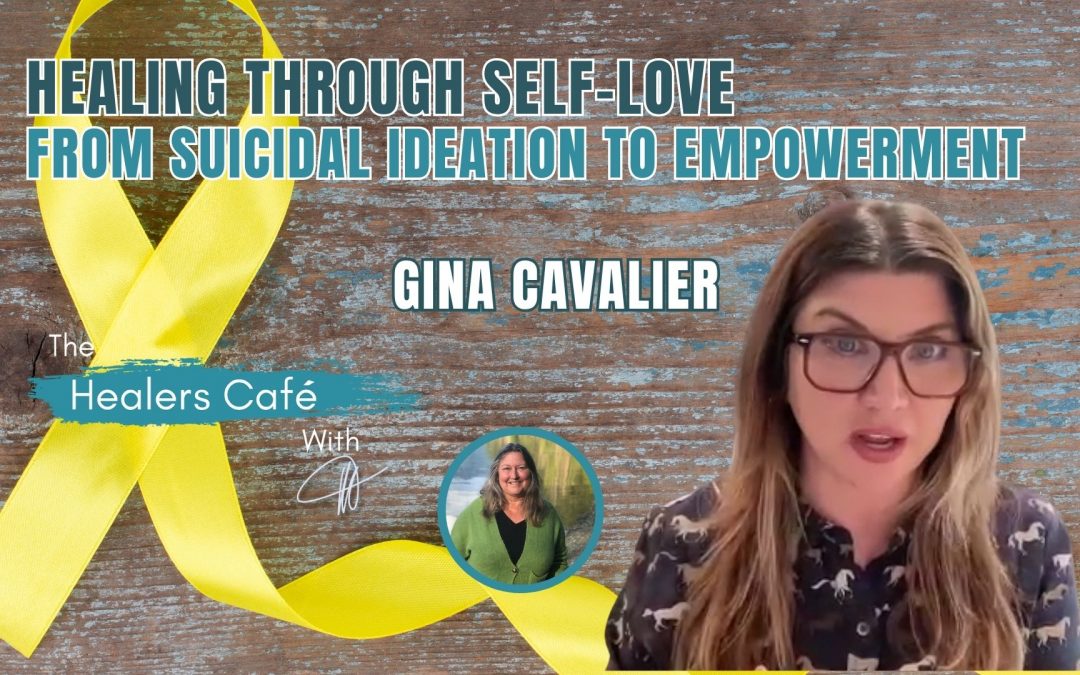
Gina Cavalier
Healing Through Self-Love: Gina Cavalier’s Journey from Suicidal Ideation to Empowerment on The Healers Café with Manon Bolliger
In this episode of The Healers Café, Manon Bolliger, FCAH, RBHT (facilitator and retired naturopath with 30+ years of practice) speaks to Gina Cavalier, a multi-talented author and filmmaker, discusses her journey from overcoming suicidal ideation to becoming a healer. She emphasizes the importance of self-love and reprogramming one’s mind to combat such thoughts.
Highlights from today’s episode include:
Gina emphasizes the need for individuals to become their own healers, creating personalized treatment plans that address their unique needs.
Gina emphasizes the critical role of self-love and self-acceptance in overcoming suicidal ideation and promoting overall well-being.
– – – – –
Manon says I just it just so reminded me of the importance of the bigger context to healing. It isn’t just about doing something that helps people, it’s really getting them fully on board with their self appreciation, self love and all of that.
ABOUT GINA CAVALIER:
Gina Cavalier is a multi-talented individual who works as an author, writer, illustrator, speaker, and filmmaker. She is dedicated to using various forms of media, including books, films, programs, technology, and support groups, to tackle the most pressing issues facing humanity. Her mission is to inspire and support people through diverse storytelling, ultimately aiming to impact the world positively. As a published author, Gina has written two books and numerous journalistic articles and is also an accomplished illustrator. With extensive experience in the media industry, she was formerly an executive at Warner Bros, Fox, and Disney and has contributed to over three hundred film and television titles, including the Harry Potter and Fantastic Beasts franchises.
Cavalier has secured two publishing deals as author and illustrator, with the first book released on February 28, 2024, titled Surviving Suicidal Ideation: From Therapy to Spirituality and the Lived Experience from the Swedenborg Foundation and her follow-up book being released by Collective Inks/OBooks, released on December 9, 2025 titled Planet Walking—A Handbook for the Living, a six-week program that delves into the intricate workings of being human, navigating the energy within our bodies, and exploring our spiritual and soul connections.
She also authored and illustrated her self-published holiday book, How I Became Santa Claus, an origin story about a man who became something special and the sacrifices he made.
Core purpose/passion: Creating stories that inspire others to help on their journey.
ABOUT MANON BOLLIGER, FCAH, RBHT
As a recently De-Registered board-certified naturopathic physician & in practice since 1992, I’ve seen an average of 150 patients per week and have helped people ranging from rural farmers in Nova Scotia to stressed out CEOs in Toronto to tri-athletes here in Vancouver.
My resolve to educate, empower and engage people to take charge of their own health is evident in my best-selling books: ‘What Patients Don’t Say if Doctors Don’t Ask: The Mindful Patient-Doctor Relationship’ and ‘A Healer in Every Household: Simple Solutions for Stress’. I also teach BowenFirst™ Therapy through Bowen College and hold transformational workshops to achieve these goals.
So, when I share with you that LISTENING to Your body is a game changer in the healing process, I am speaking from expertise and direct experience”.
Mission: A Healer in Every Household!
For more great information to go to her weekly blog: http://bowencollege.com/blog.
For tips on health & healing go to: https://www.drmanonbolliger.com/tips
SOCIAL MEDIA:
– Linktr.ee | Rumble | Gettr | Facebook | Instagram | LinkedIn | YouTube | Twitter |
About The Healers Café:
Manon’s show is the #1 show for medical practitioners and holistic healers to have heart to heart conversations about their day to day lives.
Subscribe and review on your favourite platform:
iTunes | Google Play | Spotify | Libsyn | iHeartRadio | Gaana | The Healers Cafe | Radio.com | Medioq | Audacy |
Follow The Healers Café on FB: https://www.facebook.com/thehealerscafe
Remember to subscribe if you like our videos. Click the bell if you want to be one of the first people notified of a new release.
* De-Registered, revoked & retired naturopathic physician after 30 years of practice in healthcare. Now resourceful & resolved to share with you all the tools to take care of your health & vitality!
TRANSCRIPT
Introduction 00:00
Welcome to the Healers Café. The number one show for medical practitioners and holistic healers, to have heart to heart conversations about their day to day lives, while sharing their expertise for improving your health and wellness.
Manon Bolliger 00:17
Welcome to the Healers Cafe, and today I have with me Gina Cavaliere, and she’s a multi talented individual who works as an author, a writer, an illustrator, a speaker and a filmmaker. Now she’s dedicated to using various forms of media, including books, films, programs, technologies, support groups to tackle some of the biggest issues that are facing humanity. Her mission is to inspire and support people through diverse storytelling, ultimately aiming to impact the world positively. Now you’ve secured amazing deals with different people, and you’ve got a title, surviving suicide, suicidal ideation, from therapy to spirituality and the lived experience from the Swedenborg Foundation. And you have another book coming out in in January. So I’m not sure where we’re going to start. I think you know, actually, I do know where we’re going to start. I’m just going to, if you don’t mind, sharing a little bit about your experience the lack of resources, obviously, at the time. And then, how did you know that there was more? How did you, how did you, you know, not say, Oh, well, like in Canada, we can just do mains, you know, can’t pay the rent. It’s hardship. Off you go. They’re more than happy to to end you for any kind of reasons. They’re they’re actually moving it now to even you know, mature young, younger people. It’s like you know anyway, but let’s go to you. So what, what was your story, and how did it happen for you?
Gina Cavalier 02:22
Well, thank you for having me, and welcome everybody. And I just want to say thank you for being here. And anybody who’s actually going through, you know, something right now or feel like they need, kind of a virtual hug. I want to send that out to you and stick with us. And we’re we are a community and and I know I’ve spoken to a few other people about the maids in Canada, and it’s kind of Gosh, it really hits me at the heartstrings, because, you know, you know, I had the suicidal ideation, and and it propelled me into my own healing, to where I eventually became a healer, and I started helping other people. And then my mission became to show people, to tell people that I healed my suicidal ideation. I cannot hold it. It is not in my space, in my body, in my mind, and my heart and my spirit at all. If I try to think that way again, I just start to giggle inside and tell myself it’s like I’ve reprogrammed myself so it can be reprogrammed, but I understand when you just, when you feel like you’re you really want to go and ask for kind of like help to end it, and if you have, like, an illness or and you’re in a lot of physical pain, and there’s other, you know, those are, those are situations put aside. But if it’s really just a, you know, a compelling, constant calm in your mind saying, I don’t want to be here. I don’t want to be here, I get you. But you can actually program that out. And for me, if somebody had told me that a long time ago, just like, you know, any type of, you know, natural path, or even a chiropractor or acupunt, anybody had told me, you know, what, you don’t have to live with that you can actually, there’s other people that say they’ve had this and that they don’t have it anymore, I would have been like, really, you mean, this isn’t like my eye color, I can change this because I didn’t know it. I thought it was my life for the rest of my life, and it was shameful to me, in my heart, it was embarrassing. I mean, it came with all those other things, and so that’s why I have this, this whole new mission, saying that, you know, I’ve actually got rid of this dialog that was in my mind, and you can too, and that’s sort of the basis of everything. And the reason why, and you’ll probably know about this, and other people don’t think about this as well, is. Other mental health or other conditions like depression or bipolar or whatever, those are completely different than suicidal ideation. So suicidal ideation, for the most part, from the where I’ve where I’ve spoken to a lot of people, is it comes once or twice a year, maybe maybe three times a year. It isn’t a slow thing that comes in and out of your life all year long. So what happens is, when they does come, like, say, a life event happens, or you you lost a friend, or you got a big fight with someone, you broke up with someone, you lost your job. When you have these big life events happen, it just takes you down for it becomes 911, so, it’s not something, and all of a sudden it’s like a crash course, and you’re in it, and you’re stuck, and now it’s, like, really important that you get help, but then you know that it might change in a couple days. So do you want to expose yourself when you’re going to be better in a couple days? So there’s this, like, much really, like, you know, juxtapose that you go on in confusion, and usually you do feel better in a couple of days. We’ve outlined it in the book, sort of the the different phases, because you can feel it, you know, you can be at 10 and the next morning be at a zero. There’s not a lot of you know, things in the mental health space that are like that. This is very unique, and we need to, we need to talk about that. And so people don’t get help for it, because it’s a taboo, it’s shameful. They don’t lose their job. They don’t want to be looked at differently. They’re already feeling kind of bad. So what do we do now, you know, we are getting to the point where we can say, hey, I have bipolar issues, I have depression, I have things. So that’s been that’s been open a little bit for dialog and conversation, and it is not as much judged, but suicidal ideation, is it?
Manon Bolliger 06:56
Yeah, is? Well, you know what’s interesting, what you raise here is that, as long as they can put a diagnosis on it right, there’s a kind of control over the person by drugs that questionably work. I’ll put it that way. You know, with theories that are also questionable, like, do they really understand all about mental health? Like, why are people not talking about gut health? Which is, you know, we’re more most of the neurotransmitters for mental health come from anyways, but when you have idea ideation, which is, like, I don’t know if you’re familiar with homeopathy, but we use a repertory, and suicidal ideation is one of the conditions, or states. We call it, states of mind that people can go to, and we have a broken down ideation by jumping out the window, by cutting self by so even the mechanisms are broken down, but they are considered states, and of course, it’s completely treatable because they’re conditions. They’re just states. They’re not so called diagnosis like a disease. It isn’t like that. It it doesn’t need to be seen with those eyes, you know? So I find that fascinating that you are also making that kind of distinction, right? And and why it’s so taboo is for the same reason that everything is taboo if it’s not controllable, you know?
Gina Cavalier 08:37
Yeah, I wanted to take the label off, you know, I wanted to say it’s almost like I wanted to say it first before someone else said it. For me, comes down very simply from for me and maybe not for everyone else, but this was what worked for me. When you don’t love or like yourself, you’re willing to hurt yourself. So I’m a very kind, compassionate, empathetic person. I love animals, I love people. I would help everybody. I love my job. I love the company I work for. I love the boyfriend or husband I was with. I love my friends. I love my mother, my family, right? I took care of everybody, but for me, um, you know, I, I didn’t have that self love. And people, their self love is a big buzzword, and people talk about a lot, but there is a it should be a big buzzword. It should be embraced because I didn’t love myself. And I would tell people, anybody living here during some of those bad times would have felt the same exact way, because it was a dialog that was nasty, that was, you know, would have broken anybody, but I was doing it to myself, right? Was like, it was like, self abuse, nope, but you don’t want to, like, if you have someone who has domestic abuse and they some, you’re in a bad relationship, and they hit you in the face and you break up, right? Well, you can’t break up with yourself. So it’s like. Well, what do you do? You really have to realize, hey, I’m I was actually, I had to change that. I was the one that was taking in the self pity. And everybody has a different thing, that they a piece of chocolate that they’re working on. But for me, it was self pity. So how come I didn’t get that life? How come I didn’t get that husband. How come I didn’t receive that? How come? How come people leave my life? You know, I’m such a nice person. Why? Why are people fighting with me? Why don’t they even be friends with me anymore? You know, whatever it is, right? And I would play that, and I would just, and you can almost feel why you’re thinking that, like you’re falling into a hole. If there’s a physical feeling, and what you have this bubble of ..
Read more...
energy around you, and the energy just starts to get darker and darker, almost like you’re going into a tunnel. And then when you you start to get a disconnection. And I call it like almost a severance of the light, a severance of hope, and that’s where it becomes dangerous, because you, all of a sudden, you go into massive suffering, and you just want that suffering to end so bad. You want it so bad to go away. I’m sorry. I’m getting chills all over my body as I describe it, because I remember it. You just want to go so bad you almost want the pain to end. And that’s split second decision. You know, you you can’t do anything about it after that, you know you can’t try anything else, you know. So it was like walking all of that back and learning first learning I did not love myself, and then when you do love yourself though, all of a sudden, the people you have in your life, you’re like, I’m not putting up with that. This job like a job where you’re like, it’s soul sucking or whatever. Maybe it’s not, you know, you look at it, you’d be grateful for what it does give you, but try to make plan steps to get you in a place that’s going to make you live the life you want to live if you’re in toxic relationships, recognizing that, figuring out and breaking it down, just saying each single thing you have to break down and look at it and you know, and you don’t have to do it all at one time, but you’re like, I’m constantly working on whether it’s relationship with My sister, my mother, or different things. You know, there’s never a perfect thing, but it’s just like a little bit of work at a time. But you have to fall in love with your first and change that programming in your mind, and then also connect the mind and the heart together again. Because what happens when you when you’re in that state, is there separation from your heart. You can’t even feel it beating anymore.
Manon Bolliger 12:45
I mean, they you know, how do you or put it this way, it is said that, you know, about 80% of our thoughts are negative, right? That’s in the subconscious, right? So we’re programmed, apparently this way, you know, saying apparently, because I don’t know that to be true by my own experience. You know, I’m extremely positive person, so I may be programmed that way, but I wouldn’t know it, you know. But when you have that these ideations, do you see them as, as thoughts as well, like thoughts that you could say to yourself, you know, let’s say when you’re down on I’m not good enough, or I’m this, or why do I miss out? Or whatever your issue is, then, do you question the validity of that. Do you ever go into that sort of cognitive thinking through or because you talk about a spiritual root? I’m just wondering if you could sort of dance us through what your dance was.
Gina Cavalier 13:58
Well, it actually is. I’m actually putting together a documentary, because it’s kind of interesting, because it’s very cultural based, too. So for example, people in Japan, you know society and culture and how you are seen in the society is a really big deal. So if you lose your job, it’s very shameful, and if you are in debt is very shameful. So, um, it and so there’s different cultures that have different things, right? So, but I feel like probably it all feels the same when you actually whatever starts to bubble around you, whatever that dialog is that makes you feel disconnected and separate from self is, is is that’s whatever that it is. It’s just like, it’s all of a sudden you can’t feel anymore. You go actually, completely numb. Go numb. You have to go numb pretty much before you do something. You can’t feel anything. If you were to put a pin in your your hand, you probably couldn’t feel it, because you all the synapses are. Completely, like, I don’t know, like, closed down, you’re starting to, like, leave your body years. I feel like you’re actually, are kind of leaving the body in a way, you know, you’re forcing the soul out of the body. You’re like, you know. And you you’re really trying to give a temporary solution, you know. And, but it’s a permanent solution, right? You know? And that’s that’s also a thing to think about, that you don’t want to do a permanent solution to something that’s a temporary problem, right?
Manon Bolliger 15:32
Yeah, yeah. But, but do you see you’re saying you’re numb, literally numb, what happens like, what is the process that you’ve used in those moments that has given you the hope, and not just the hope, the actual transformation so or to recognize this, and tonight, they Go, there, what’s, what’s the first step, or, you know, whatever for you,
Gina Cavalier 16:04
for me, and I don’t it’s also in the book, I created almost a second self, and there’s a lot of therapists that use this technique, but I created an adult self and then a child self that was separate, and I used to when I would be stuck in there, I would send in this other self that would come in and talk to me and hold me actually, physically, see a version of myself go in and put their arms around me and feel our hearts beating together and telling me it was going to be okay, that we’re going to get through it, that I’m a beautiful soul. I got so much more to learn and do and that, you know, you know, things like that. And sometimes it would bring in the child self. It was if it was a childhood wound, because, you know, I had a very violent father, you know. So I would go back into those moments of being hit and abuse a very young age, right? And I would have that child look in her eyes, and it was me, but I would look at her eyes, and she would just be crying, and I I wouldn’t go, and I’d hug her, and I would tell her it was going to be okay. And then, you know, kids, they just, they’re so resilient. And she me would get like, a smile on my face, and I would brush her hair away, whatever I didn’t get in those moments, right? I would do that for myself. And it’s like having that, like I said, like so, for example, if you love animals and you can’t like you love your dogs and you can’t imagine anybody hurting them, right? It’s that, that level of love and fight and compassion that you get for yourself, you have to go get it for yourself.
Manon Bolliger 17:46
Yeah, yeah. You know, I see people with
Gina Cavalier 17:49
like that are really into politics, right? And they’ll fight to the death on their side of politics, right? But they won’t do that for themselves, right? You know, they wouldn’t do that for you know?
Manon Bolliger 18:02
Well, I think if people came from themselves, it would be a very different political scene. Yeah, yeah, because it’s, it’s true self love first, right? And yeah, and then so, so that is definitely a method using the the inner child or the adult, or the giving yourself what you didn’t get. Yeah, somebody’s coming to the rescue. Of course, it’s you, but that’s and now
Gina Cavalier 18:29
I use it all the time. Um, when I’m in a moment, I don’t have those thoughts anymore. But of course, like something terrible will come in, and I’ll have this that, you know, a moment or whatever. And a lot of times it’ll say, that’s not you anymore. I go, you know, that’s right. You can be upset right now, you can be angry, you can be frustrated, but you got so much more to learn and do. And I almost like the dialog now. I’m so used to doing it. It kicks right in. It’s just like going to the gym and working out. It’s like in the beginning, it’s really painful, and it’s slow and it hurts, and then all of a sudden, get to the place where it just becomes natural. So I’m in that phase, and that’s why I believe it can that’s that healing phase where it’s just natural to protect myself. Now I put myself first before anything else, and that’s so weird.
Commercial Break 19:21
What would your life be like if you were pain free? If you were one of the millions who suffer from chronic pain? The thought of just one day without it may seem impossible. This is often because conventional medicine tends to fall short in the treatment of pain, opting to prescribe pills or recommend surgery rather than getting to the root cause of the problem. But if you are suffering with emotional or physical pain, there is hope. Join the founder and CEO of Bowen College, Manon Bolliger, live online for your body mind reboot. Learn how to listen to yourself. Symptoms and get to the root cause of your pain, plus be trained in basic bone therapy moves so that you can reboot your body for optimal health. You don’t have to live in pain. You can heal, stop the pain pill cycle by visiting www.yourbodymindreboot.com to learn more and to register.
Gina Cavalier 20:31
I always put myself last. Yeah, I’m getting chills again, like, I don’t know what, if there’s somebody out here. I’m feeling some kind of energy, but I put myself first. And it was hard, because you feel very guilt. You have to get over the guilt of like, certainly putting yourself first, even above children, above animals, above anybody in your life. And but, but the people that love you, they want you to put yourself first, yeah, well, that’s you. They want you to put, you know, because
Manon Bolliger 21:03
that’s what you would want for them. Yeah, right. So that’s another way of kind of doing the inversion is kind of go, you know. And a lot of people you know that are are real carers and givers tend to forget what they would do for the other to and they don’t do it to themselves, right? And so reminding them, you know, also in that moment could be helpful as well, you know, to what would what would you say? If this was
Gina Cavalier 21:33
I do have extreme PTSD, to be honest. I still do use my tools every night I go to sleep listening to meditation music or a sleep hypnosis. I love Joe Dispenza, or there’s different ones that I really like. If sometimes I don’t need it, but almost always I need a little bit. I put it on, and soon as I wake up, it just calms me. It just brings me into my body. Because I got so used to leaving my body that my I love to be in outer space energetically, you know. And the only way that you can make real changes in your life is to be more into your body. Is to be more present as much as possible. Be here, be now, whatever’s happening, you know, just you know, look at it with a loving state and you know, we always get through it. You always get through it somehow. You know, I always and sometimes I watch videos on people that have been have had things that I couldn’t imagine happening to me, like I watched this kid who had a tractor fall on him and he lost his whole lower body and his arm. He’s only got one arm and and he was sitting, he’s sitting there in the in his now living a whole full life. Just got married to the wonderful woman. Doesn’t even have a lower half their body, big smiles on their face. It’s like, how does that spirit? How does that spirit, yeah, through all that, still with a giant smile on the face, you know, with now planning a full family. So me, who haven’t, hasn’t had that kind of extreme strategy. How come I’m sitting here, like in the corner, you know, I’m just, it’s hard to compare, but sometimes it’s like finding hope in other people’s stories and saying, Wow, yeah,
Manon Bolliger 23:21
yeah, interesting. And so after that process, like it’s almost like you’re you’re separate. It’s like you’re the wise self is looking at the other right a little bit and helping. How long have you found generally that it takes to to know that you’re out of that, that you don’t believe your thoughts anymore? Put it that way,
Gina Cavalier 23:50
it’s not a super fast thing, but it will. It’ll start changing almost immediately if you make that commitment to yourself, and it will just get better over time. And I really think even after three months, you’re going to be a different person. Is that? And it’s like our our book has a lot of different exercises, whether, you know, we plan everything out, whether it’s meditation, whether it’s affirmations, whether it’s it’s being a workout, you have to You are your own healer. You have to plan your own treatment plan, cuz you’re the only one that knows what works for you, you know, and you know it. Go to a therapist if that’s what you want. Like you have to make your own treatment plan and and when it’s not working, you know, exit out, have your it’s like, create your own toolbox. You have to become your own physician. You can’t. Nobody’s going to have all the, you know, we used to put a lot of, I we still do have a lot of like respect and all that for people like, like you and in this space. But you have to, you have to make your own. And plan like it’s not you only get to see them for half an hour once a month, or something like that. You’re self 24/7, so you have to plan it out. You have to make the list. You have to you might even make the list of people that are you need to talk to and say, Hey, I’m on a healing thing right now. I can’t engage in X, Y and Z. You might need to quit drinking, you know, if it’s a depressant and you find yourself depressed, or you know what? What are the things that are not helping you? You know, and you know things like that, maybe even sometimes eating better. That’s a thing of self love. You know, you know, as someone who just doesn’t, you know, eat quality food all the time, and they’re, they’re just overeating or whatever. It’s a part of, like them hating themselves, you know, you know all that stuff. It’s like, you know, when you start to love yourself. I mean, I really care about what I put in my body. It’s just another version of, like, life. Just like love myself. Now, you know. And instead, what happened to me is that, you know, I lost a bunch of weight when I when I started healing my suicidal ideation. That wasn’t the main goal. My main goal was, you know, and I actually got felt like I looked younger. I called in different people and friendships that were way more giving. I just, you know, things just started, things just started to align a lot better, because I was exuding a certain energy. And it was, I was getting it back from the outside world, too. So what I mean is, like, You’re doing all this inner work, but you’ll, you’ll have to pay a little bit attention that the world is changing around you, they’re seeing you change, you know, and you walk taller you. There’s different things that happen, and these are the things that that you just want to get through, not having suicidal thoughts, but or are going down and feeling like that extreme suffering, but all of a sudden, and then you kind of look at yourself and look around, you go, wow, I’ve got new great friends. I got new job opportunities, you know, and I feel younger. I have a lot more energy, you know, those are, like, the side effects, but it’s, it’s all related,
Manon Bolliger 27:12
yeah. I mean, the appreciation part is also, it’s a side effect, but it also can be, you know, an acknowledgement, you know, of well, I’ve got, you know, I do have some new friends now, and, you know, all of that, which reinforces, kind of the path, you know, yeah, no, it’s great. So what is your because I’m looking at the time, and I want to know a little bit about your your new book too, like, what’s the difference between the books and how could people be best served getting whichever book
Gina Cavalier 27:48
this surviving suicidal ideation. This has a little bit of my personal story in it, and it was co written by Dr Amelia Kelly, who was a trauma informed therapist, so she has a lot of medical things in there, because I, I was like, I’m just a girl who heal my suicidal ideation. I need more to get to the people. So the first book, and I’m really proud of this, and the first book, I really wanted it to have a little bit more of a PhD behind it and all, and some of that information. The next book is called Planet walking a handbook for the living. And I kind of stole, I kind of reverse stole Tim Burton’s handbook for the recently deceased movie buff. I worked in the film industry for a really long time, and I thought, well, what’s the handbook for the living? You know? So I channel, I kind of channeled this book, I say because it just kind of fell out. One of the other publishers asked me who didn’t get to publish this book, if I had anything else to me? I said, Yes, I do. So, of course I do. So I wrote it in seven weeks, 70,000 words, and what it is is I kind of had the millennials in my mind, just because they, or people that you know, have short attention spans, they didn’t want to they want to know a little bit about energy. They want a little know a little bit about how to find your life purpose, a little bit how to heal. Instead of, like a whole, this is a whole book on how to heal suicidal ideation. This is a basically like, Hey, you’re here on this planet. Here’s how you know, here’s how it works. Here’s how you find your life path. Here’s how you find your themes. How do you feel your gifts? Here’s how it dark energy works. Here’s how light energy works. It even goes into angels and but just small, you know, couple pages, and then I do artwork in it that illustrate how energy moves through the body. So you just want to look at the artwork. You can see how, when two people come together, how the energy vibrates. I drew it out for them, how the energy comes in. Moves through the chakras and things like that. So people can get a visualization of, oh, now I get
Manon Bolliger 30:08
it interesting. Something you said that got me there. Um, one second I lost. I lost the thought, No, I was thinking the, I mean, so the the art and all that was always your skill, right? And it’s more just your experience that’s kind of you, you expressed yourself through your your art to your your skill, right? Is that?
Gina Cavalier 30:38
Well, I used to doodle a lot, right? And the doodles were messy and manic and crazy, and it was just, you just look at it was, what is that? And then people would say, Can I have that? It’s gorgeous. And I’d be like, This is my doodle, you know? And I could remember just being like, and I still use the same pen, this is the what I do most my art with. And it would just be very intense, right? What I realized when I’m doing my healing is that I needed a way to let the anger out and the frustration out, and I couldn’t do with my voice, because I’m not a yeller, and I needed to get it out. So I got it out for my fingers. But then people were like, as telling me it was art, and I was like, I’m not an artist. This is just, you know, doodles. And they’re like, Well, I want to buy it. And I think someone bought one of my doodles for $800 and I was like, hmm, okay. And I was like, here I got a whole box of doodles. Look at all my doodles. And then people, it just started to turn into and I realized that’s how I was. It was a part of my survival mechanism that my soul created for myself to put that pain through my hands and onto a piece of paper. And it was just something I you don’t I didn’t realize that was like it was my own healing that was happening. And people see all kinds of different things in them. And I think because I wasn’t a trained artist, I felt like, you know, sort of, I didn’t give it value for a really long time, even after people bought like, I would have art shows and all of my art would be gone by the night and right away, and I still didn’t give myself value. You know, it was that part of that self love. I was like, I’m not an artist. They’re like, they just made all that money, you know. So I’m really trying to even go back to do more art nowadays and realize that that is my Avenue, and that it resonates with people. And oh, my God, it was my it was my healing companions all along, ever since I was a child, I’ve done this, and I feel like we get these tools and these skills that we think are not even anything, and they’re really there to say, I bet you it saved my life.
Manon Bolliger 32:52
Yeah, well, I’m going to share something that you might find interesting. So I’m just going to share it, because it may help somebody else understand the potential. And of course, if you disagree, please say so. But what I’m feeling strongly is that in the art, right, you’re you’re basically mimicking the what you’re experiencing, but it’s expressed through something. So if we look at homeopathy, it’s like the law of similars, and in homeopathy, like cures like so in other words, if you can resonate with a field or an energy, which, in the end, that’s what homeopathy is, right? It goes through the water system, but it’s, it’s an, it’s a, an electric, you know, physical physics type of energy, right? And it’s like somebody who identifies with that doodle is feeling that, oh, this, there’s a part of me that can heal through this
Gina Cavalier 34:04
absolutely, oh, 100 100% I mean, I look at it now. I mean, I have, like my ex husband, you know, on a mattress, you know, like sitting there, and he was a big drinker, you know what I mean. And like I was, you know, getting rid of my fear, my anger and about late, losing that relationship and things like that. Yeah, it’s like, that’s why it’s like, if you can write a song or pull out a a drum machine, do, you know, create a song or write something like, it’s such a great way to you have to get it out. It’s, it’s, it’s, we’re like pressure cookers, if we don’t, and that’s when the tea kettle explodes. I mean, when you have 10 year old, you know, I asked counselors at schools. You know, with little kids, my brother is a counselor for like, 30 years. He’s just like, it’s unbelievable. Six year olds coming and saying they’re suicidal, you know, so that I go to that cause. So even if all that doesn’t even matter, if you don’t want to hear about the chitter chatter of anything, and there’s political stuff, but what about the these children? You know, if we’re, if we’re not going to do it for the kids, then what kind of, what kind of community and society do any of us have?
Manon Bolliger 35:23
Yeah, 100% agree. I mean, I, you know, I’ve seen kids cutting themselves young, you know, six, eight. I mean, I don’t think I even knew how to use a knife properly.
Gina Cavalier 35:39
That’s all to me very I think we have a little bit of that in our book, but a lot of that that’s all related to wanting to self harm, is that you don’t self love, yeah, yeah. And you’re in pain, and you want to feel some pain, and that’s that numb feeling I was telling you about, because you want to feel something, because there is like a numbness that comes over when you get to point where you’re really bad. If I’m one person that can raise my vibration and change my story at this level, you know, I’ve already won. To me, you know, even whatever happens moving forward, whatever countries do or people do, or companies do, or how much money you have in the bank, it’s like to me, I’ve already won because to overcome something that big in your life, you know, and be able to, you know, what else happens to do when you fall in love with yourself is, do you really start to like you? You see colors differently. You start to, you start to live more in the world, yeah, you know. And, and it just keeps getting better and better and better, you know, you start to see the beauty in all things, like even the flow of water, like a river, like you have just more appreciation. Because when you’re in the thick of suicidal ideation, you can’t feel a mountain, you can’t feel an ocean, you can’t you can’t appreciate that stuff you’re you feel really dead inside, you know, and so once you heal that, you really get to truly feel alive again and recognize that there’s always going to be problems, and you’re not one of them anymore, in a way you know
Manon Bolliger 37:15
exactly well. Thank you. That’s our time, but it’s wonderful, inspiring, and I really think somebody will be hearing this that needs this. So I really appreciate your time.
Gina Cavalier 37:28
Thank you. And if you have any questions for me, I’m at the liberatedhealer.com or Gina cavalier.com and wishing you all a beautiful day.
Manon Bolliger 37:38
This interview with Gina Cavalier is really makes me happy for myself as well, for the Listen program, which I’ve been so behind. And you know, many, many of the students, at least all the recent ones, have taken the program as part of what I teach in Bowen college. But she really describes that first step is that loving yourself, and I think we need to, as as long as we’re helping other people, we’ve got to understand that their ability to love themselves, to see themselves to you know, to embrace themselves is is crucial to their healing. So, yeah, I just it just so reminded me of the importance of the bigger context to healing. It isn’t just about doing something that helps people, it’s really getting them fully on board with their self appreciation, self love and all of that. And I really do agree it is about the children, because we’re living in a strange society where, yeah, children are, are not being looked after by our society in general, the way that they could be. And I think, you know, we don’t have to go into all of the reasons of this. We just got to notice that there’s a huge problem, and we do need to talk about it, not the politics, not all of that stuff, just the reality that, you know, kids are hurting themselves, cutting themselves, killing themselves, and that really shouldn’t exist in in our society. The degree that it does is shocking. So anyway, it was a very enlightening interview.
ENDING:
Thank you for joining us at the Healers Café. If you haven’t already done so, please like, comment and subscribe with notifications on as I post a new podcast every Wednesday with tons of useful information and tips for natural healing that you won’t want to miss.
Continue your healing journey by visiting TheHealersCafe.com and her website and discover how to listen to your body and reboot optimal health or DrManonBolliger.com/tips.
* De-Registered, revoked & retired naturopathic physician, after 30 years of practice in healthcare. Now resourceful & resolved to share with you all the tools to take care of your health & vitality!
Other Episodes
Resources:
If you haven’t done so, would you please RATE and REVIEW The Healers Café podcast? It definitely is appreciated.
Follow / Listen to The Healers Cafe on:
iTunes | Google Play | Spotify, | Libsyn | iHeartRadio | Gaana | The Healers Cafe | Radio.com | and many more
Get This Episode
Dr Eva Selhub
Transforming Medicine Through Resilience & Holistic Healing with Dr. Eva Selhub’s on The Healers Café with Manon Bolliger
Dr Sam Zand
Healing the Soul: A Holistic Approach to Mental Wellness with Dr Sam Zand on The Healers Café with Manon Bolliger
Dr Mala
Challenges and Advocacy in Trauma Care with Dr Malasri Chaudhery-Malgeri on The Healers Café with Manon Bolliger
Evan Jarschauer
How to Break Through Addiction & Mental Health Barriers with Evan Jarschauer on The Healers Café with Manon Bolliger
Kimberly Mitchell
How Kimberly’s experience with depression & recovery inspires others on The Healers Café with Manon Bolliger
Ron Phelan
Healing from the Jaw, with Bowen Therapy and Ron Phelan on The Healers Café with Manon Bolliger
Randy Lyman
Success with Soul: Business Reimagined – Randy Lyman on The Healers Café with Manon Bolliger
Christine Trimpe
Sugar-Free & Thriving: Overcoming Addiction and Losing Weight – Christine Trimpe on The Healers Café with Manon Bolliger
Dr. Howard Walsdorf
Balancing the Elements: Ancient Wisdom for Modern Health – Dr. Howard Walsdorf on The Healers Café with Manon Bolliger
Maria Maldonado Smith
From Vision to Victory: Aligning Dreams with Purpose and Discipline –Maria Maldonado Smith on The Healers Café with Manon Bolliger
Diane Randall
Diane Randall: Empowering Holistic Well-being and Personal Growth on The Healers Café with Manon
Dr. Nelly Naguib
Healing Beyond Medicine with the Power of Bowen Therapy – Dr. Nelly Naguib on The Healers Café with Manon Bolliger
Judy Koons
Breaking Free: Healing Trauma & Stress Through Somatic Breathing with Judy Koons on The Healers Café with Manon Bolliger
Dr. Lynn Anderson, ND
Wellness vs. Big Pharma: The Fight for Natural Health with Dr. Lynn Anderson, ND on The Healers Café with Manon Bolliger
Debi Carlin Boyle
Aging Young: The Power of Small Changes for Longevity with Debi Carlin Boyle on The Healers Café with Manon Bolliger
Lisa Erickson
Healing Trauma Through Chakra Work with Lisa Erickson on The Healers Café with Manon Bolliger
Anne-Marie Ferguson
Exploring the Evolution of Bowen Therapy with Anne-Marie Ferguson on The Healers Café with Manon Bolliger
Russell Sturgess
How Does Bowen Therapy Illuminate the Connection Between Human & Soul with Russell Sturgess on The Healers Café with Manon Bolliger
Dr Romi Fung
Can We Reduce the Risk of Dementia with Better Lifestyle Habits? – Dr Romi Fung, ND on The Healers Café with host Manon Bolliger
Dori Baker
Can Soulful Practices Help Us Heal and Build Inclusive Communities? – Dori Baker on The Healers Café with host Manon Bolliger
Yvonne Caputo
Are You Prepared for the End? The Power of Advanced Directives and Final Wishes – Yvonne Caputo on The Healers Café with host Manon Bolliger
Kamini Wood
Overcoming Imposter Syndrome & Embracing Your Authentic Self – Kamini Wood on The Healers Café with host Manon Bolliger
Tzara Attwater
Transforming Anxious Attachments into Self-Leadership Mastery – Tzara Attwater on The Healers Café with host Manon Bolliger
Janet McConnell
Transforming Health & Embracing Aging with Exercise & Lifestyle – Janet McConnell on The Healers Café with host Manon Bolliger
Ruchi Pinniger
Redefining Prosperity. Aligning Business Goals with Personal Well-Being – Ruchi Pinniger on The Healers Café with host Manon Bolliger
Jana Stern
Transforming Mental Health Challenges Into Spiritual Strength – Jana Stern on The Healers Café with host Manon Bolliger
Dr. Deb Muth, NP, ND, MSNH, Master Herbalist, Shaman
Turning Adversity Into Advocacy Through Functional Medicine – Dr. Deb Muth on The Healers Café with Manon Bolliger
Samantha Bailey
Overcoming Betrayal and Infidelity to Rebuild Your Life – Samantha Bailey on the Healers Café with Manon Bolliger
Dr Sam Shay
Supporting Parents of Neurodiverse Kids with Functional Medicine – Dr. Sam Shay on The Healers Café with Manon Bolliger
Niraj Naik
Healing Beyond Medicine: The Power of Awareness and Breathwork – Niraj Naik on the Healers Café
Dr. Jeff Feinman
A Holistic Path to Wellness with Bowen Therapy, Kinesiology, and Qigong – Ben Calder on the Healers Café
Ben Calder
A Holistic Path to Wellness with Bowen Therapy, Kinesiology, and Qigong – Ben Calder on the Healers Café
Rhonda Nelson
Living with AERD: Misdiagnosis, Missteps, and the Fight for Effective Treatment – Rhonda Nelson on the Healers Café with host Manon Bolliger
Autumn Bear
Navigating Long Covid with Holistic Healing – Autumn Bear on the Healers Café & Host Manon Bolliger
Camille Leon
Why Is Visibility Crucial for Holistic Therapists? Camille Leon on the Healers Café & Host Manon Bolliger
Alisha DiMasi
Planning Life’s Milestones: Intentional Approaches to Birth and Death with Alisha DiMasi on the Healers Cafe & host Manon Bolliger
Jessica Baladad
Transforming Breast Cancer Awareness with a Life-Changing Self-Exam App with Jessica Baladad on the Healers Cafe & host Manon Bolliger
Melissa Jarzynski
Harnessing Healing: Equine Therapy’s Impact on Trauma Recovery with Melissa Jarzynski on the Healers Cafe & host Manon Bolliger
Karyne Daniels
A Path to Healing and Spirituality Through Sacred Dance with Karyne Daniels on the Healers Café with Manon Bolliger
Jorge Padron
The Link Between Mental & Physical Health & Ketamine’s Role in Treatment with Jorge Padron on The Healers Café hosted by Manon Bolliger
Dr David Berger
Holistic Approach to Pediatric Care with Dr David Berger on The Healers Café hosted by Manon Bolliger
Jeralyn Glass
Unlock the Power of Hertz and Discover Your Personal Music Frequency with Jeralyn Glass on The Healers Café hosted by Manon Bolliger
Jennifer Neville
The Battle Within: Understanding and Healing Through Hypnotherapy with Jennifer Neville on The Healers Café hosted by Manon Bolliger
Niki J Norlock
Addressing Chronic Pain: Physical, Mental, and Emotional Solutions Explored with Niki J. Norlock on The Healers Café hosted by Manon Bolliger
Tasha Darwent
Resilient Grace: Tasha’s Journey from Addiction and Dis-ease to Healing with Tasha Darwent on The Healers Café hosted by Manon Bolliger
Andrea L. Wehlann
Can You Move Past Severe Trauma and Begin to Heal? with Andrea L. Wehlann on The Healers Café hosted by Manon Bolliger
Kumiko Kanayama
How to Use Shiatsu to Release Negative Energy in Your Body with Kumiko Kanayama on The Healers Café hosted by Manon Bolliger
Adriana Keefe
Can Human Design Help You Understand Your Life’s Purpose? with Adriana Keefe on The Healers Cafe hosted by Manon Bolliger
Sally DiCesare
Physical Pain and Your Relationships: Is There a Connection? with Sally DiCesare on The Healers Cafe hosted by Manon Bolliger
Josh Dech
Exploring the Causes of Gut Problems such as IBS and Crohn’s – Is It Possible for Your Body to Return to Normal?
Amazing Robyn
In this episode of The Healers Café, Manon Bolliger, FCAH, RBHT (facilitator and retired naturopath with 30+ years of practice) speaks with Robyn Peterson, a foresight consultant for high level government officials, Hollywood elites, and royals.
Teresa Ford
Emotional Healing and Breaking Trauma Patterns Through Autonomic Nervous System Regulation
Viola Murrone
Understanding Reiki and Crystals for Healing Mind, Body, and Soul with Viola Murrone
Liz Fisher
Using Emotional Freedom Techniques (EFT) for Body-Focused Repetitive Behaviors with Liz Fisher on The Healers Café with Manon Bolliger
Dr. David Lemmon, ND
Natural Medicine for Cancer Prevention with Dr. David Lemmon, ND on The Healers Café with Manon Bolliger
Josh Mathe
Stop Self-Sabotaging and Instead Make It Fun with Josh Mathe on The Healers Café with Manon Bolliger
Therese Forton Barnes
Do Your Home Products Have Carcinogens with Therese Forton Barnes on The Healers Café with Manon Bolliger
Kavita Sahai
How to Find Essential Oils That Work with Kavita Sahai on The Healers Café with Manon Bolliger
Jack Blackwell
Your Trauma May Actually Not Be Your Trauma with Jack Blackwell on The Healers Café with Manon Bolliger
Helen Dobra
True Healing Can’t Happen Until You Release Trauma with Helen Dobra on The Healers Café with Manon Bolliger
Kimberly Evering
No Matter Your Body Type You Can Do Yoga with Kimberly Evering on The Healers Café with Manon Bolliger
Amber MacPhail
How Bowen Therapy and Homeopathy Can Heal with Amber McPhail on The Healers Café with Manon Bolliger
Deana Tsiapalis
Is Past Trauma Leading to Chronic Pain with Deana Tsiapalis on The Healers Café with Manon Bolliger
Alison Bladh
Menopause Symptoms Can Be Managed Naturally with Alison Bladh on The Healers Café with Manon Bolliger
Karese Laguerre
Improper Breathing Can Lead to Sleep & Health Issues with Karese Laguerre on The Healers Café with Manon Bolliger
Melissa Deally
Your Health Is So Much More Than Just Physical with Melissa Deally on The Healers Café with Manon Bolliger
Sir Darren Jacklin
What Started as Hiking Led to Saving Children with Sir Darren Jacklin on The Healers Café with Manon Bolliger
Shannon Leggett
Physio and Yoga for Whole Body Health – with Shannon Leggett on The Healers Café with Manon Bolliger
Chris Wark
20 Years Cancer Free “I Believed I Could Heal” – with Chris Wark on The Healers Café with Manon Bolliger
Dr. Tom Ingegno
How Cupping and Cold-Water Therapy Work with Dr. Tom Ingegno on The Healers Café with Manon Bolliger
Dr. Gala Gorman
Using Chinese Medicine to Restore Energy Flow with Dr. Gala Gorman on The Healers Café with Manon Bolliger
Dr Stacey Francis
Adding Nutrition to Chiropractic Therapy for Better Health with Dr. Stacey Francis on The Healers Café with Manon Bolliger
Dr. John Poothullil
Diabetes is Not what you think. What’s the real cause and the right cure? With Dr. John Poothullil on The Healers Café with Manon Bolliger
Jonathan Jay Dubois
Using Shamanism to Understand We Aren’t One – We Are Everything with Jonathan Jay Dubois on The Healers Café with Manon Bolliger
Chloe Panta
You Absolutely Can Achieve the Life You Desire with Chloe Panta on The Healers Café with Manon Bolliger
Dr Jannie Krause ND
How to Feel Great Into Your 40’s and Beyond with Dr. Jannine Krause, ND on The Healers Café with Manon Bolliger
Dr Carli Axford
Release Stored Stressors to Help Heal Health Issues with Dr. Carli Axford on The Healers Café with Manon Bolliger
Russell Sturgess
Bowen Therapy Opens The Veil Between Human and Soul with Russell Sturgess on The Healers Café with Manon Bolliger
Karen Egoff
To Heal from Loss, We Need to Grieve with Karen Egoff on The Healers Café with Manon Bolliger
Dr Mark Cohen PhD
How To Mix Honey & Vinegar for Overall Health with Dr. Marc Cohen, PhD on The Healers Café with Manon Bolliger
Dr. Mary Sanders
Understanding the Chakra Connection to Overall Health with Dr. Mary Sanders on The Healers Café with Manon Bolliger
Dr. Romi Fung, ND
Preventative Options for Dementia and Alzheimer’s with Dr. Romi Fung, ND on The Healers Café with Manon Bolliger
Dr Sarah Marshall, ND
Healers Need Intuition to Help Their Patients Heal with Dr Sarah Marshall, ND on The Healers Café with Manon Bolliger
Dr Riva Preil
The Benefits of Pelvic Floor Physical Therapy with Dr Riva Preil on The Healers Café with Manon Bolliger
Ora Nadrich
Your Intuition is the Key to Your Health with Ora Nadrich on The Healers Café with Manon Bolliger
Janice Litvin
How Leaders Can Prevent Employee Burnout with Janice Litvin on The Healers Café with Manon Bolliger
Danielle Zinaich
How Does Homeopathy Work to Treat Illness with Danielle Zinaich on The Healers Café with Manon Bolliger
Dr Dolores Fazzino
How To Have a Relationship with Your Body with Dr Dolores Fazzino on The Healers Café with Manon Bolliger
Lizanne Flynn
Using Energy to Better Understand Animals Needs – Lizanne Flynn on The Healers Café with Manon Bolliger
Kendra Dahlstrom
From Abuse, Trauma, and Trafficking to Healing the Soul – Kendra Dahlstrom on The Healers Café with Manon Bolliger
Rebecca Kase
Using EMDR to Feel and Heal From Trauma – Rebecca Kase on The Healers Café with Manon Bolliger
Annelise Piers
How To Find Your Miraculous Self Using Energetic NLP– Art Giser on The Healers Café with Manon Bolliger
Art Giser
How To Find Your Miraculous Self Using Energetic NLP– Art Giser on The Healers Café with Manon Bolliger
Kristen Blythe
Trauma is Often Rooted Deeply Affecting Your Overall Health – Kristen Blythe on The Healers Café with Manon Bolliger
Shaman Shu
Sacred Plants Help Connect Your Body, Mind, and Soul – Shaman Shu on The Healers Café with Manon Bolliger
Lisann Valentin
Let Go of Fear’s Hand to Find Your True Calling – Lisann Valentin on The Healers Café with Manon Bolliger
Yanira Puy
Emotional Health Begins with Feeling Your Emotions – Yanira Puy on The Healers Café with Manon Bolliger
Tsao Lin Moy
Trying to Conceive in Your 40’s? Integrative Medicine May Be the Answer - Tsao Lin Moy on The Healers Café with Manon BolligerIn this episode of The Healers Café, Manon Bolliger (facilitator and retired naturopath with 30+ years of practice) speaks with Tsao Lin Moy...
AnnaLaura Brown
Growing A Health Coach Business Through Networking with AnnaLaura Brown on The Healers Café with Manon BolligerIn this episode of The Healers Café, Manon Bolliger, FCAH, CBHT (facilitator and retired naturopath with 30+ years of practice) speaks with AnnaLaura Brown...
Dr Aimie Apigian
You Can Release the Trauma Stored in Your Nervous System – Dr. Aimie Apigian on The Healers Café with Manon BolligerIn this episode of The Healers Café, Manon Bolliger (facilitator and retired naturopath with 30+ years of practice) speaks with Dr. Aimie Apigian about...
